
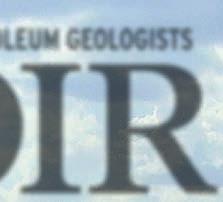

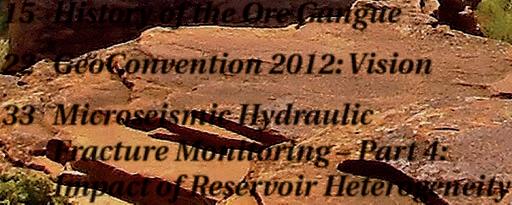







GEOSCIENCE SOFTWARE

MAPPING AND ANALYSIS


INDUSTRY INSIGHT






















































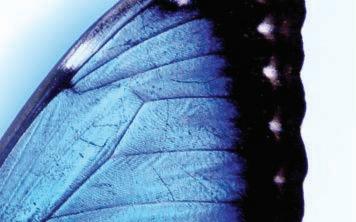



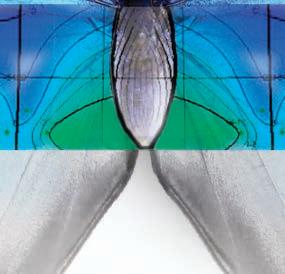

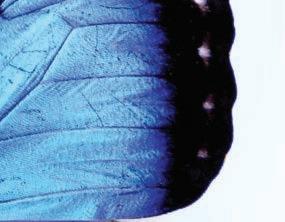









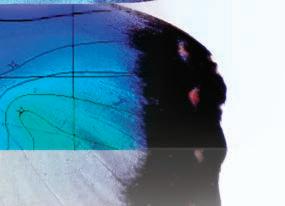


















IHS is invested in the success of Canada’s energy industry. We maintain an open dialogue with our customers, and as a result we are launching a new IHS AccuMap® map and user interface and have delivered workflow integration between IHS Petra® and IHS Kingdom® We have also provided transparency and quality information, and created solutions for better access to global resources.
Today more than ever, partnering with IHS can make the difference between average performance and operational excellence.
Begin your transformation today. Visit IHS at GeoConvention 2012, booth 522. ihs.com/transform



CSPG OFFICE
#110, 333 – 5th Avenue SW Calgary, Alberta, Canada T2P 3B6
Tel: 403-264-5610
Web: www.cspg.org
Office hours: Monday to Friday, 8:30am to 4:00pm
Executive Director: Lis Bjeld
Tel: 403-513-1235, Email: lis.bjeld@cspg.org
Member Services:
Tel: 403-264-5610, Email: membership@cspg.org
Communications and Publications: Caitlin Young
Email: caitlin.young@cspg.org, Tel: 403-513-1230
Programs Development: Aileen Lozie Tel: 403-513-1227, Email: aileen.lozie@cspg.org
Accounting and Office Administration: Kasandra Klein Tel: 403-513-1233, Email: kasandra.klein@cspg.org
Corporate Sponsorship: Lis Bjeld
Tel: 403-513-1235, Email: lis.bjeld@cspg.org
EDITORS/AUTHORS
Please submit RESERVOIR articles to the CSPG office. Submission deadline is the 23rd day of the month, two months prior to issue date. (e.g., January 23 for the March issue).
To publish an article, the CSPG requires digital copies of the document. Text should be in Microsoft Word format and illustrations should be in TIFF format at 300 dpi., at final size. For additional information on manuscript preparation, refer to the Guidelines for Authors published in the CSPG Bulletin or contact the editor.
Ben McKenzie Colin Yeo (Assistant Tech. Editor) Tarheel Exploration EnCana Corporation Tel: 403-277-4496 Tel: 403-645-7724 Email: bjmck@live.com Email: colin.yeo@encana.com
Coordinating Editor
Caitlin Young, Publications Coordinator, CSPG Tel: 403-513-1230, Email: caitlin.young@cspg.org,
ADVERTISING
Advertising inquiries should be directed to Caitlin Young, Tel: 403-513-1230 email: caitlin.young@cspg.org. The deadline to reserve advertising space is the 23rd day of the month, two months prior to issue date.



They can copy us. They just can’t be us. If imitation is the sincerest form of attery, we’re one attered group. Drawing on a quarter century of oil and gas experience, geoLOGIC continues to be the market leader in data, software solutions and support. And while we lead the way, our competitors desperately create parity products, sometimes years after us. For details on how geoLOGIC leads the way, visit www.geoLOGIC.com/leader
Leading the way with customer-driven data, integrated software and services for your upstream decision-making needs.
geoSCOUT | gDC | petroCUBE at www.geoLOGIC.com















CSPG EXECUTIVE
PRESIDENT
Robin Mann • AJM Deloitte rcmann@deloitte.ca Tel: (403) 648-3210
VICE PRESIDENT
Paul MacKay • Shale Petroleum Ltd. Paul.Mackay@shalepetroleum.com Tel: (403) 457-3930
PAST PRESIDENT
Kirk Osadetz • Geological Survey of Canada, Calgary kosadetz@nrcan.gc.ca Tel: (403) 292-7022
FINANCE DIRECTOR
Andrea Hood • geoLOGIC systems ltd. ahood@geologic.com Tel: (403) 262-1992
ASSISTANT FINANCE DIRECTOR
Samantha Etherington • CNRL samantha.etherington@cnrl.com Tel: (403) 386-6459
PROGRAM DIRECTOR
Jon Noad • Murphy Oil Corporation jon_noad@murphyoilcorp.com Tel: (403) 294-8829
ASSISTANT PROGRAM DIRECTOR
Dave Russum • AJM Deloitte drussum@deloitte.ca Tel: (403) 648-3228
SERVICES DIRECTOR
Michelle Hawke • Apache Canada Ltd. Michelle.Hawke@apachecorp.com Tel: (403) 261-1200
ASSISTANT SERVICES DIRECTOR
Mike Seifert • Canadian Discovery mseifert@canadiandiscovery.com Tel: (403) 269-3644
COMMUNICATIONS DIRECTOR
Jim Barclay • ConocoPhillips Canada Jim.E.Barclay@conocophillips.com Tel: (403) 532-3889
ASSISTANT COMMUNICATIONS DIRECTOR
Curtis Evans • ERCB curtis.evans@ercb.ca Tel: (403) 297-8386
OUTREACH DIRECTOR
Simon Haynes • Statoil Canada Ltd. sihay@statoil.com Tel: (403) 724-0364
ASSISTANT OUTREACH DIRECTOR
Dawn Hodgins • Imperial Oil Resources dawn.hodgins@exxonmobil.com Tel: (403) 232-5931
EXECUTIVE DIRECTOR
Lis Bjeld • CSPG lis.bjeld@cspg.org Tel: (403) 513-1235
A Message from Michelle Hawke, Services Director
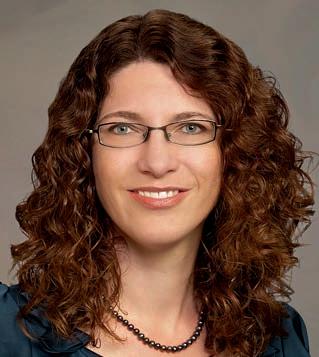
In May, 2009 a survey of the CSPG membership was conducted...
...under the leadership of then Service Director Ayaz Gulamhussein. The survey consisted of 83 questions, covering many aspects of the CSPG’s operations and gave respondents the opportunity to comment on any given question. The survey was completed by 756 people, (slightly less than one-third of the membership), and you certainly had a lot to say. A big thankyou should be extended to everyone who took the time to answer the survey, because your responses have helped to guide the direction of the CSPG over the past three years.
So what did we learn about you? Most of you cited “technical information exchange” as the most significant reason that you are a CSPG member, but “networking opportunities” and “supporting CSPG activities” were also important to the majority of respondents. Not surprisingly, the Reservoir, the Bulletin, the annual geoConvention, and Luncheon Talks were cited as the products, events, or activities most important to the membership. Sadly, half of you felt the Executive Comment column of the Reservoir was only “somewhat” or “not” useful. But I digress…
Most of you (69%) rated your level of satisfaction with the CSPG as either 4 or 5 out of 5. This was great to hear, but the result also indicated that a substantial number of our members believed that there was a little (or a lot) of room for improvement. The comments provided by the responents were particularly helpful in outlining where our members felt we could improve on what we were already doing, and what new initiatives would be appreciated. Many of you wanted the annual convention moved back downtown (where it now is), more courses, and field trips outside of Convention (we now have a fall Education Week, and field courses running throughout the spring, summer, and fall) and better management for volunteer roles (we now a Volunteer Management Committee to support this critical aspect of the Society). We began offering free student memberships a few years ago to increase interest and awareness in the Society prior to graduation. We didn’t raise dues (61% of you did not consider an increase to be justified), but did save costs by changing
the Bulletin to an all-digital format, which many of you indicated that you would prefer. We now have job postings on the website. Of course, we haven’t been able to implement all your suggestions, but I hope that you’ll agree that we have made strides to improve your CSPG without sacrificing the things that make it a great organization.
Three years have passed since that poll was conducted, and we’ll be asking to hear from you again later this year. We are in the process of deciding what questions to ask in order to provide the Board of Directors and Committee Chairs with meaningful information that will help us to steer the Society in the right direction in the coming years. For example, 44% of the survey respondents were either already retired, or were planning to retire within the next ten years. Clearly, it would be a huge loss to the Society if the majority our members chose to leave the CSPG upon retirement from the workforce, taking with them the knowledge, experience, and love of geology that got us to where we are today. We need to understand how to ensure that the CSPG continues to offer value to members who wish to retain a link to their profession after retirement.
Conversely, although there has been a large influx of new geoscience graduates into the workforce in recent years, only 14% of the respondents had less than five years work experience. As a member-driven organization, the CSPG’s activities reflect the professional needs and interests of its members, particularly those who actively volunteer. It is important that we understand what early- career geoscientists want from the CSPG, and that we effectively communicate what we have to offer, so that we can continue to attract new members and remain relevent in this ever-changing industry.
We are planning to send out the survey later this year. Please make an effort to fill it out when you have ample time to answer the questions thoughtfully. Your opinions and comments really do matter, and will help to determine the direction of the CSPG in the years to come.
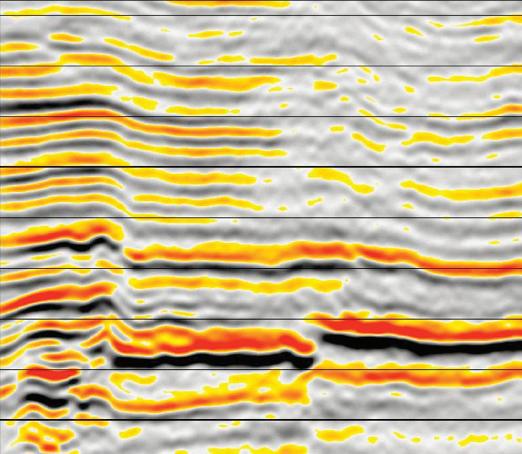
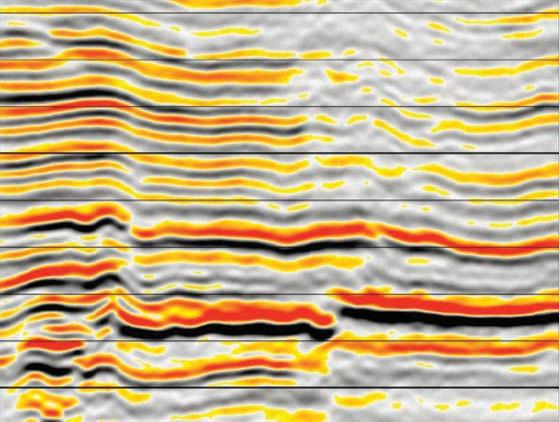
CHALLENGE:
Orthorhombic PSTM improves results below fractured overburdens.
When vertically aligned fractures are embedded in VTI (vertical transverse isotropic) media, they cause seismic velocities and anisotropic coefficients to vary with azimuth. Velocities that vary with azimuth in addition to incident angle require an orthorhombic velocity model, which is the natural extension of VTI and HTI velocity models.
CGGVeritas has successfully developed a robust workflow that enables accurate orthorhombic velocity analysis and pre-stack time migration for imaging target areas below fractured overburdens.
It benefits AVO/AVAZ analysis for fracture, stress and lithology estimation with improved gather flatness, larger reliable angles and better preservation of amplitudes.
Unparalleled Customer Service:
“Incorporating orthorhombic velocity parameters improves imaging and delivers impressive AVO and AVAZ benefits to our clients”
- Katie Underwood, CGGVeritas Geophysical Imager









CORPORATE SPONSORS
DIAMOND
IHS
GEOLOGIC SYSTEMS LTD
SCHLUMBERGER C ANADA LTD
PL ATINUM
CENOVUS
CONOCOPHILLIPS
ENC ANA
IMPERIAL OIL
NEXEN INC . S HELL
TALISMAN E NERGY
POGGENPOHL
GOLD
APEGA
CSPG EDUCATIONAL TRUST FUND
DEVON C ANADA
STATOIL
WEATHERFORD L ABORATORIES
SILVER ENERPLUS
JEWEL S UITE
ROX AR
TAQA NORTH
BRO NZE
ATHABASCA OIL SANDS
BAKER ATLAS WIRELINE
BLUEBACK RESERVOIR
PARADIGM
GEOVARIANCES
CSEG FOUNDATION
HUS KY ENERGY
LITTLE ROCK DOCUMENT SERVICES
LORING TARCORE LABS
MACQUARIE CAPITAL MARKETS
CANADA LIMITED
ROKE TECHNOLOGIES
RPS BOYD PETROSEARCH
HALLIBURTON E NERGY S ERVICES
SUNCOR E NERGY
SUNDOG PRINTING
WEATHERFORD CANADA PARTNERSHIP


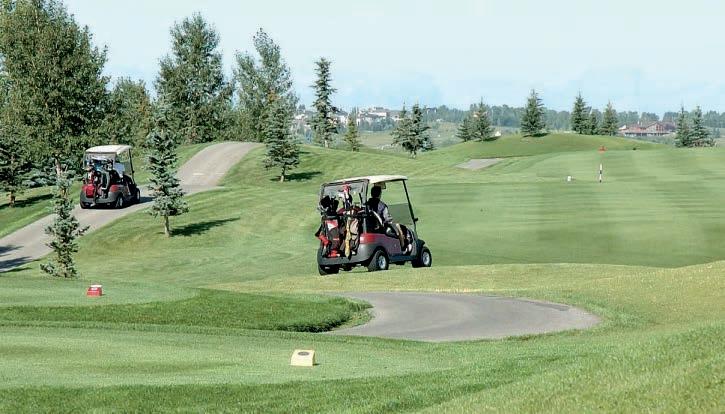
SAVE TH E DATE! 24 August 2012 CSPG Mixed Gold Tournament

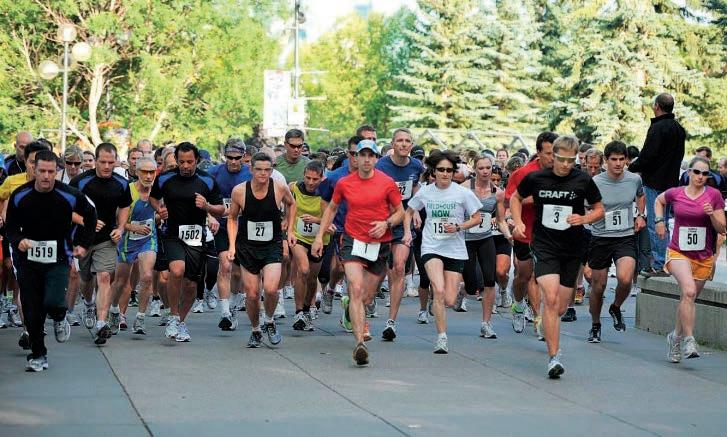

TH E DATE! 12 September 2012 CSPG-CS EG Road Race and Fun Run SAVE TH E DATE! 21-22 June 2012 CSPG Classic Golf Tournament
An
integrated approach to assessing natural fracture initiation, spatial arrangement, aperture preservation, and flow properties in sandstones versus shales
SPEAKER
Dr. Jon E . Olson
The University of Texas at Austin 11:30 am
Tuesday, M ay 22, 2012
C algary, TE L US C onvention C entre C algary, A lberta
Please note: The cut-off date for ticket sales is 1:00 pm, Tuesday, May 15, 2012
CSPG Member Ticket Price: $42.00 + GST.
Non-Member Ticket Price: $45.00 + GST.
Each CSPG Technical Luncheon is 1 APEGA PDH credit.
Natural fracture characterization is an important component of reservoir flow capacity assessment as well as hydraulic fracture propagation analysis. This talk will describe some new developments in understanding natural fracture pattern development and allude to how the difference in natural fracture attributes in sandstones and shales might impact hydraulic fracture operations.
Accurate predictions of natural fracture flow attributes in sandstones and shales require an understanding of the underlying mechanisms responsible for fracture growth and aperture preservation. Geomechanical calculations show that opening-mode crack growth (tensile failure) can precede shear failure in the subsurface under a wide range of pore pressure and stress conditions. Crackseal textures and fracture aperture-tolength ratios suggest that fractures typically propagate and fill with cement simultaneously. The degree of openness of a fracture to flow depends on the competing rates of mechanical aperture growth and precipitated cement crystal growth. Fractured reservoir permeability is also strongly dependent on fracture pattern geometries. Modeling shows that effective permeabilities calculated for tight gas sandstones depend more strongly on fracture pattern connectivity than on the magnitude of open-fracture aperture, in apparent contradiction to the widely applied cubic law for fracture permeability estimation.
Natural fractures in shales seem to have some fundamental differences with


Webcasts sponsored by
sandstones. One aspect commonly observed in shales is a very small fracture spacing to mechanical thickness ratio, often much less than one. To address this problem, we have developed a coupled poroelastic fracture growth model to investigate the influence of host-rock permeability during natural fracture growth. The hypothesis is that for a fracture to develop a substantial stress shadow around it, which would promote wider fracture spacing, it needs to grow faster than its neighbors in order to suppress their growth. Fast fracture growth, however, can be retarded by the lack of fluid replenishment to the fracture in extremely low permeability mudrocks. This allows slower fractures to catch up, and the result should be very close spacing. Preliminary modeling confirms the growth retardation for low-permeability rocks, which can change fracture growth time from thousands of years to millions of years.
Dr. Olson has been an Associate Professor in Petroleum and Geosystems Engineering at The University of Texas at Austin since 1995, before which he spent six years working for Mobil Research and Development Corporation. He specializes in geomechanics applications to fractured reservoir characterization and hydraulic fracturing. Having degrees in both engineering and geology (B.S. from the University of Notre Dame and Ph.D. from Stanford University) gives him a unique perspective on problems that lie within the intersection of structural geology and reservoir geomechanics.


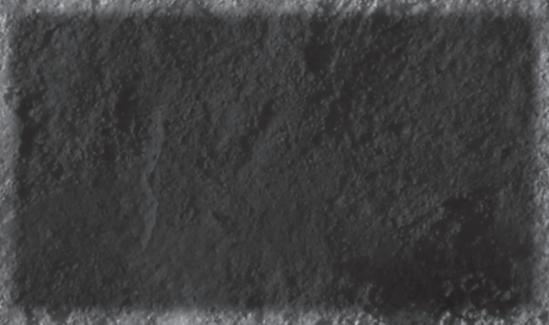
the Scotian Shelf and Slope, offshore Nova Scotia –evaluation of the future oil versus gas prospects and its significance to East Coast energy strategy beyond 2012
SPEAKER
M ukhopadhyay ( M uki), Prasanta K., Global Geoenergy Research Ltd.
11:30 am
Tuesday, June 5, 2012
Calgary TELUS Convention Centre Calgary, Alberta
Please note: The cut-off date for ticket sales is 1:00 pm, Tuesday, M ay 29, 2012. CSPG Member Ticket Price: $42.00 + GST. Non- Member Ticket Price: $45.00 + GST.
Each CSPG Technical Luncheon is 1 APEGA PDH credit. Tickets may be purchased online at www. cspg.org.
The Scotian Basin is considered to be one of the major petroleum provinces in the Central Atlantic Conjugate Margin and bears a resemblance to the late Triassic-Recent sediments from Offshore Morocco (other side of the Atlantic Margin) in relation to geological framework, play types, and salt mobilization histories. Subbasins Abenaki, Sable, Shelburne, and Laurentian have distinct variability in the geological framework, salt dynamics, source rock potential, and hydrocarbon migration patterns. Although 23 significant hydrocarbon discoveries have been reported from Jurassic, Cretaceous, and Tertiary reservoirs within the Scotian Shelf, our geochemistry and modeling data suggests that future discoveries may exist within the
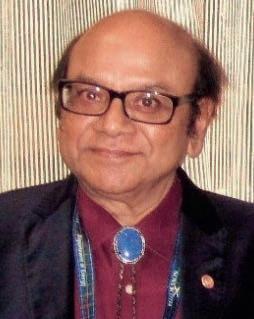
Jurassic section of the shelf. In the Scotian Shelf, three petroleum systems and four hydrocarbon families (light oil, condensate, and gas) were genetically correlated with the early Jurassic lacustrine (Cohasset oil), late Jurassic mixed marine/terrestrial Verrill Canyon ( Kimmeridgian-Tithonian; Venture Gas), and the marine Tertiary Banquereau formations (Primrose oil).
Unlike the Scotian Shelf, only 25 m of overpressured reservoir sand (early Cretaceous gas/condensate) have been discovered in the Jurassic-Tertiary sediments within the Scotian Slope. The lack of hydrocarbon discoveries in the slope is closely related to five critical parameters that have influenced the variability of the petroleum systems in each basin: (a) heat flow in relation to allochthonous and autochthonous salt mobilization and basement fractures; (b) direction of turbidite channel-forming sand mobilization and the bypassing of sands in relation to salt mobilization; (c) deepwater source-rock anoxicity in relation to the organic facies and the kinetics of the hydrocarbon charge factor; (d) the timing of the hydrocarbon flow movement in relation to the timing of the hydrocarbon trap; and (e) the survival of hydrocarbons and seal-rock stability in relation to the upper Tertiary sediment section and listric growth faults.
The Petroleum System Risk Assessment (PSRA) within the Deepwater Scotian Slope sediments of Eastern Canada has predicted the presence of four viable petroleum systems within the mid-Jurassic to Tertiary sediments. Based on the variability of the heat flow regime in various parts of the Scotian Margin, gas and condensate that are genetically connected to two late Jurassic to early Cretaceous Verrill Canyon marine source rocks would be the most likely hydrocarbons within the subsalt turbidite fans and salt-related reservoirs in the various minibasins. Late Triassic
Webcasts sponsored by
to early Jurassic lacustrine source rock might be able to produce Cohasset-type 40° to 55° API light oil within the Tertiary turbidite fan reservoirs of the eastern Shelburne Subbasin. However, our PSRA research clearly demonstrates that early Jurassic-sourced lacustrine oil would be volumetrically insignificant within the total hydrocarbon volume of the Scotian Slope.
Prasanta K. Mukhopadhyay, known as Muki, has 28 years of research experience in petroleum exploration including the application of petroleum systems analysis (geological evaluation, petroleum geochemistry/organic petrology, and numerical modelling) in basin evaluation and risk appraisal of both conventional and unconventional petroleum prospects. He had a Ph.D. in Coal Geology/Maturation from Jadavpur University, Calcutta, India and has completed two years of Post-Doctoral Research as Humboldt Fellow in Petroleum Geochemistry (RWTH, Aachen, Germany). He has published 65 articles related to petroleum exploration, CBM and CO2 sequestration, chapters in various books (AAPG, etc.) and edited four books for Elsevier and American Chemical Society. He
(Continued on page 10...)

The Techlog* wellbore software platform enables you to capitalize on your data investment—improving planning and formation evaluation— in every well. The new acoustics and geomechanics, and enhanced mineral solver capabilities provide powerful additional science, while the redesigned and highly customizable interface promotes knowledge sharing and increases productivity.
Techlog software delivers optimal data integration for better decisions—from exploration to production.
For details call (403) 294 4300 www.slb.com/techlogpetrophysics
(...Continued from page 9)
has presented numerous (more than 300) oral and poster presentations at various scientific society meetings and conducted many short and webinar courses for various oil companies and professional organizations in Brazil, Canada, China, Japan, Venezuela, and USA (AAPG and various universities) on petroleum geochemistry and petroleum systems modelling.
He has organized special sessions for AAPG (2000-2010), the American Chemical Society (1993-1995), TSOP, NASA Astrobiology Group for the SPIE and other societies (2009, 2010, and 2011) on deepwater exploration, CBM, shale gas, and solar system hydrocarbons. Muki worked as geochemist, research scientist or associate, advisor in geochemistry/modeling for Oil and Natural Gas Commission (Dehra Dun, India), Institute for Petroleum Geochemistry and Petroleum (ICH-5, Juelich, Germany), Texas Bureau of Economic Geology (Austin, Texas), Geofuel Research Institute (Sydney, Nova Scotia), and Murphy Oil USA (Houston, Texas).
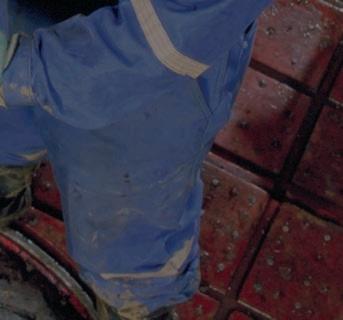

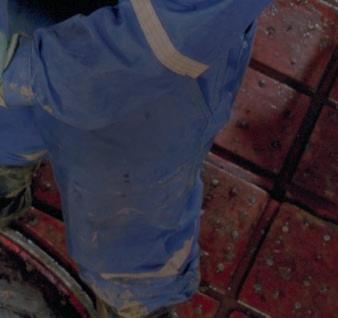
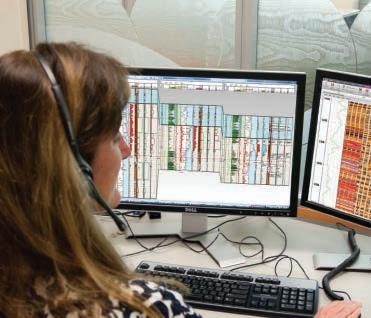

Dr. Muki is currently the President of Global Geoenergy Research Limited, Halifax, Nova Scotia, Canada and an Adjunct Professor at the Earth Sciences Department, Dalhousie University, Halifax, Nova Scotia. He is actively involved in multi-phase research in conventional and unconventional petroleum systems exploration. He is an active member of AAPG, CSPG, TSOP, and the Member Society Council of AGI. He was involved with the AAPG Research Committee (2000-2005) and has been Associate Editor of the AAPG Bulletin since 2002. He has received several best-paper awards on petroleum geochemistry and coalbed methane. He received various honours from different scientific societies and from the Province of Nova Scotia: (a) 2011: Lifetime Achievement Award (Honorary Membership Award) from the Society for Organic Petrology, Washington D.C; (b) 2011 and 1998: Ambassador of Nova Scotia Award from the Nova Scotia Dept. of Economic Development and World Trade and Convention Centre, Halifax, Nova Scotia, respectively; (c) 1998: Citation (Honor of Achievement) from the Premier of Nova Scotia for the scientific achievements and dedications made to the promotion of the Petroleum and Coal Industries of Nova Scotia, Canada; (d) elected as President of The Society for Organic Petrology, Washington, DC and served during 2000-2001; and (e) the General Conference Chairman for the Society for Organic Petrology in 2011 and 1998, respectively.
He was also the organic geochemist onboard the Global Challenger in Leg 87 (Nankai Trough, Japan) with Gas Hydrate Discovery and Leg 107 in Tyrrhenian Sea and worked on Mediterranean Sapropel with JOIDES Resolution.
Sponsored
SPEAKER
R ob Taerum
University of Calgary
12 noon
Thursday, M ay 3, 2012 Conference Centre Room A, +30 level, Western Canadian Place (Husky E nergy)
707 – 8th Avenue S.W. Calgary, Alberta
The foreland limit of deformation in the Canadian Rocky Mountains is typically marked by a triangle zone located at the Plains-Foothills boundary. Along a 120 km segment of the central Alberta FoothillsPlains boundary the geometry of the thrust front is unusual as foreland-verging thrust sheets have developed and deformation continues for some distance into the Plains. Conversely hinterland of the thrust front, internal to the northern portion of the central Alberta Foothills belt, the outcrop pattern is “style ejectif” and the anticlines are cored by antiformally stacked duplexes. Structural analysis of the “style ejectif” shows the tops of the antiformally stacked duplexes are bounded by hinterland-directed thrust faults. “Style ejectif” and triangle zone structural styles are manifestations of the tectonic wedging process. A regional study of the structural geology and stratigraphy, for a 350-by-100 kilometre strip of the central Alberta Foothills and adjacent Plains, provides insight into which factors lead to the contrasting structural styles of the triangle zone and foreland-directed
thrust. The unique structural geometry that developed in this region depended on the progressive development of dominant, very weak detachment surfaces through the increase in pore pressure, and syndeformational erosion and deposition of eroded material sourced from adjacent thrust sheets.
Structural Division talks are monthly and cover a diversity of structural themes. Our Structural Division sponsors are HEF Petrophysical and Husky Energy. All are welcome and no registration is required. For additional information, to be placed on the Division e-mail list or to present a talk, please contact Darcie Greggs, Darcie. Greggs@huskyenergy.com.



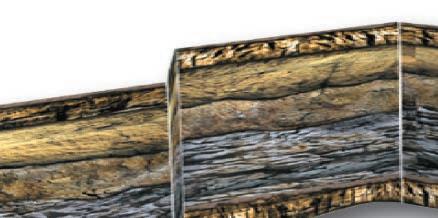
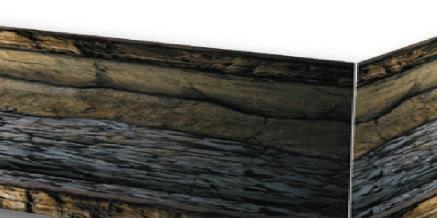



SPEAKER
Dr. Clayton V. Deutsch, P. Eng., University of Alberta
12 noon
Wednesday, M ay 9, 2012 Conference Centre Room A, +30 level, Western Canadian Place (Husky E nergy)
707 – 8th Avenue S.W.
Calgary, Alberta
Geostatistical reservoir modelling has evolved rapidly in the last twenty years with many techniques being developed. Some have become accepted in practice and some have languished for a number of reasons. The presenter is preparing a Best Practices Guide on Geostatistics. This talk will provide an overview of the evolving landscape of best practices in reservoir modelling. Some techniques that seemed good in the past are found to be less useful than imagined. Some techniques that seem crazy are shown to be surprisingly efficient and effective. Also, a number of research directions of significant promise will be reviewed.
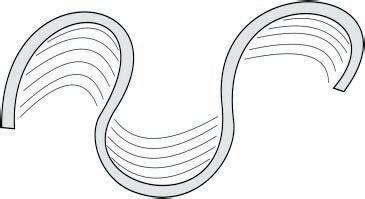
Not all ideas that seem crazy are crazy. It is a stretch to group ideas into simple categories of crazy and good; there are many ideas somewhere in between and everyone has a different perspective. One idea that seems crazy is to adopt a grid-free nested model of reservoir heterogeneities from the mm scale to the km scale. This Ph.D. research of Mehran Hassanpour builds on previous work. The approach has the potential to remove the need for SIS, MPS, and other ad hoc facies modeling schemes in certain geological settings.
Another idea that seems crazy is that discretizing a flow-simulation grid block by 3-by-3-by-3 is sufficient for effective flow properties. There are between 1 to 100 million core-sized volumes within a grid block and it hardly seems reasonable that we can
assign core-scale properties on such a coarse grid, apply a direct upscaling, and get effective
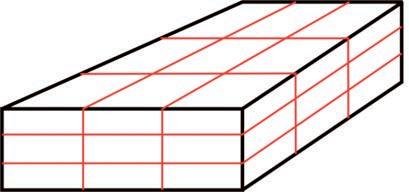
values that represent the grid block. It seems crazy that we could numerically model the full production system of a reservoir linked to a geological model represented by 100 realizations of multiple rock properties. The obvious application is to SAGD where individual well pairs, drainage areas, surface pads, and production facilities including pipelines are all related to an underlying stochastic geological model. The location and sequencing of each element of the production system can be optimized and the sensitivity to different geological parameters understood. Uncertainty in forecasted performance due to assumptions in the approximate physics model would be quantified and managed.
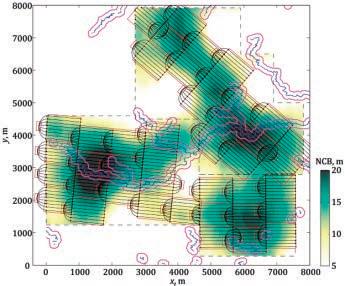
It seems crazy that 2-D mapping of resource and reserve variables is useful in 2012. Shouldn’t everything be high-resolution 3-D models? Yet, different models are useful under different circumstances. Millimeterscale models are useful to understand core photos and image logs and multivariate 2-D models (documented by Ren and others) are useful for resource estimation with uncertainty over many sections. Such models are also useful to quantify uncertainty versus drillhole spacing with an understanding of the confounding factors.
Not all ideas that seem good are good. Back in the Eighties we thought that increases in CPU speed and capacity would remove the need for ranking and simplified proxy models. If anything, the use of P10, P50, and P90 models is becoming entrenched in practice and there is an understanding that even higher-resolution flow models
would be desirable for many flow processes. We cannot count on improvements in computing technology to remove the need for ranking or proxy modeling. There was also the thought that we should take great care with the missing scale and develop block simulation. As mentioned above, simulating points on a coarse discretization systematically outperforms attempts at direct block modeling. Resimulating at a finer grid when and where needed overcomes concerns about too-coarse discretization for local flow simulation. Intensive research in scale-up seemed like a good idea, but we can simply scale up with the correct physics when and as needed. Greater effort modeling realistic geological heterogeneity is warranted. Another good idea is to consider a universal random function model / approach that could be applied in all cases, that is, avoid site-specific customized approaches and develop a grand unifying theory for widespread application. This seems like a good idea from a mathematical or statistical viewpoint, but makes less sense in light of the rich complexity of geological processes and reservoir recovery mechanisms. Another seemingly good idea is to unite all of the required geomodeling tools in a vendorsupported commercial package. This makes life simpler for technology managers, but makes life miserable and constrained for front-line geomodelers. No single software has everything and some software evolves quickly.
There are a number of ideas that we have not decided on yet. Grouping ideas into crazy and good is simplistic. My personal effort to document best practice seems like a good idea. Disclosing recommended workflows, procedures implementation decisions, and documentation standards would help newcomers find their way through the many various options of geostatistics. Weak areas would be identified and additional research would be triggered. This may turn out to be a bad idea. Geological modeling is more complex than a simple set of rules; geomodelers must creatively apply a variety of tools and not be constrained by a prescription coming from one perspective.
Dr. Deutsch is the Director of the School of Mining and Petroleum Engineering at the University of Aberta, the Canada Research Chair in Natural Resources Uncertainty Assessment, and Director of the Centre for Computational Geostatistics. Dr. Deutsch has published six books, about 100 peer-reviewed papers, and about 100 papers in conference proceedings.
Sarda Sahney, University of Bristol
7:30 PM
Friday, M ay 25th, 2012
Mount Royal U niversity, Room B108 Calgary, Alberta
Life on Earth today is diverse. Though tetrapods (amphibians, reptiles, mammals, and birds) make up a small fraction of the planet’s biomass, there are currently some 30,000 species occupying a broad range of ecosystems. This great diversity has presumably grown from a single species that crept onto land in the Devonian, likely a large amphibian that preyed on fish and lived in a waterside habitat.
Many researchers are investigating how this growth from one species to many tens of thousands occurred by examining the fossil record. Approaches to quantifying and uncovering patterns of diversity are explored taking into consideration the advantages and disadvantages of various strategies as well as the use of independent
lines of evidence. Diversity is most commonly assessed by tallying taxa on a global scale but can also be considered from an ecological, morphological, or genetic perspective. Our ability to understand the complex relationships among these types of diversity is constantly improving, allowing us to draw correlations and better define the history of life on Earth.
We focus on investigating the link between tetrapod taxonomic and ecological diversity of tetrapods on a global scale to determine the degree to which competition and opportunism have driven the evolution of vertebrates on land.
Opportunism is represented by the expansion of tetrapods into new habitats as they moved from the waterside to exploit new sectors of Earth’s surface, such as forests, plains, and deserts whereas competition occurred within a more-or-less constant habitat, leading to specialization within communities so that each of the increasing number of species exploited an ever-narrower range of resources.
The patterns of global taxonomic and ecological diversity of tetrapods are closely correlated, essentially exponential, with setbacks at times of major extinction events. Diversity changes correlate closely with the dominant classes of tetrapods (amphibians in the Palaeozoic, reptiles in the Mesozoic, birds and mammals in the Cenozoic). These groups have driven ecological diversity opportunistically, by expansion and contraction of occupied

ecospace, rather than by direct competition within existing ecospace and each group has used ecospace at a greater rate than their predecessors.
BIOGRAPHY
Sarda Sahney is a researcher at the University of Bristol studying macroevolution, with a focus on the evolution of vertebrate communities. She studies the biodiversity of tetrapods, from the perspective of biodiversity, expansion, and extinction in the fossil record. In particular, she has written about the early diversification of tetrapod ecosystems, the effects of the Permo-Triassic mass extinction and large-scale influences on the shape of biodiversity.
This event is jointly presented by the Alberta Palaeontological Society, Mount Royal University, and the CSPG Palaeontology Division. For details or to present a talk in the future please contact CSPG Paleo Division Chair Philip Benham at 403-691-3343 or APS Coordinator Harold Whittaker at 403-286-0349 or contact programs@albertapaleo.org. Visit the APS website for confirmation of event times and upcoming speakers: http://www. albertapaleo.org/




The Tour nament would like to thank the following 2011 sponsors:
Diamond Sponsors
geoLOGIC Systems
Schlumberger of Canada
Emerald Sponsors
Baker Atlas Wireline
Energy Navigator Inc.
Fugro Data Solutions Canada Inc.
GeoStrata Resources Inc.
Halliburton
IHS
AGAT Laboratories
ATB Corporate Financial Services
Athabasca Oil Sands Corp.
Belloy Petroleum Consulting
CB Securities
Demchuk & Day
Gold Sponsors
Arcis Corporation
Canadian Discovery Ltd.
Little Rock Document Services
Macquarie Capital Markets Canada Ltd.
NAME:
Elbow Springs Golf Club • June 21-22, 2012 S
Canadian Society of Petroleum Geologists
ConocoPhillips Canada
Continental Laboratories Ltd.
Geo-Steering Solutions Inc.
Greystone Resources Ltd.
Knowledge Energy Inc.
MD Totco Nov. Wellsite Gas Watch
Silver Sponsors
Fekete Associates
Gabel Energy Inc.
Bronze Sponsors
Candian Stratigraphic Services
Global Energy Services
M J Systems
ProGeo Consultants
RBC Dominion Securities
RECON Petrotechnologies Ltd.
Weatherford Canada Partnership
Divestco Inc.
GLJ Petroleum Consultants
LXL Consulting Ltd.
Painted Pony Petroleum Corp.
Ryan Energy Technologies
West Canadian
Pajak Engineering Ltd.
Pason Systems Corp.
Petrocraft Products Ltd.
Rigsat Communications
RPS Energy
Sample Pro Ltd.
Sproule Associates Ltd.
Total Gas Dectection Ltd.
Typhoon Energy Ltd.
Martin Quinn
Seismic Brokerage Services Ltd.
Hydro-Fax Resources Ltd. San Dago Resources Ltd.
Sponsorship Contact: Richard Chisholm 403-538-8290
Visit us on Facebook or Linkedin: CSPG Classic Golf
The CSPG Classic Golf Tournament has incorporated fundraising for charity as part of the event. In 2012 the charities selected are the Salvation Army Agape Hospice and CSPG Educational Trust Fund
Registration Form
SIGNIFICANT OTHER:
COMPANY:
ADDRESS (Bus.):
POSTAL
TELEPHONE: CELL PHONE*:
*The CSPG Classic respects FOIP. (Privacy Act of Alberta) No contact information is given to third parties.
All contestants are required to have a photo in the Golfer’s Photo Roster. Former contestants who have submitted a photo in the past need not do so again. Handicap: __________ Golf Index: __________ or Average of best three 18-hole scores in past 2 years:______________
Registration Fee: Includes two rounds of golf with power cart, paid driving range, door prize draws, skill prizes, BBQ (at Elbow Springs), and
awards banquet (Calgary Petroleum Club) for you and your guest.
Non-member Member
Cost: Tournament Fee $285.25 GST$14.45 Total if paying by cheque $299.50 Credit Card Fee$9.00
To assist the Entertainment Committee with budgeting, please indicate if you plan to attend the two major social events of the tournament:
Thursday Barbecue: Yes No Friday Awards Banquet: Self: Yes No Guest:Yes No
Social Events Cancellation or Additions require 72 hours notice before the event. Please contact Bob Earle by phone: (403) 803-3744 or email: cspgclassicgolf@gmail.com
Make Cheques Payable To: CSPG (ClassicGolf)
Send Entries To: CSPG Classic Golf Tournament 110, 333 5th Avenue S.W. Calgary, AB, T2P 3B6
* Please photocopy your entry form and cheque before mailing.
Last day for refund requests: June 5, 2012.
Mail/Courier Registration: Print this registration Form (http://www.cspg.org/events/events-social-classicgolf.cfm)
| By Nancy McKellar
Ore Gangue – for graduates of the University of Saskatchewan’s Geology Department these two words do not conjure up piles of slag left over from the mining of valuable minerals, but rather, a student society that was the source of camaraderie and not a small amount of beer drinking while at university. The Ore Gangue is the oldest undergraduate society on the U of S campus. On January 18, 1934 a group of students gathered to form a geological club. A committee was formed to draw up a constitution and decide on a name for the club. The first regular meeting was held on January 23, 1934 and the name “Ore Gangue” was adopted. However, in a letter dated April 9, 1932, geology undergraduate Melvyn Thompson writes to his family that “I was out to a banquet and dance the Monday night previous to Easter. It was a function of “Ore Gangue” held at the King George Hotel. Only members and their lady friends and officials were there, 25 couples, so you see it was quite an exclusive affair.” We can infer that the geology students were socializing outside of classes for some time before the official incorporation of the club. Either way, the Ore Gangue has a long and proud history for geology students at the University of Saskatchewan.
Starting in 1937, the Ore Gangue put out a yearly publication, The Concentrates, which highlighted the previous year’s activities and achievements. As well, that year saw the formation of an alumni group of Ore Gangue graduates, a group that remains strong and active to this day. For the Golden Jubilee of the University of Saskatchewan in 1959, The Concentrates put out an expanded version recording the history of the Geology Department, including the activities of the Ore Gangue. As well, the 1984 issue of The Concentrates, the 50th Anniversary of the Ore Gangue, contains much valuable information. Much of the history summarized here comes from those issues of The Concentrates. In addition, the University of Saskatchewan Archives has several boxes of Ore Gangue material, including the minutes of meetings from 1934-64 and many photographs. Both The Concentrates and the Archives were rich sources of material for this article. Finally, many Ore Ganguers graciously responded to my e-mailed questions and/or met me for coffee and shared their stories and memories of their time at U of S.
The fledgling organization quickly developed an esprit de corps. In 1940, the Ore Gangue

decided to design a crest that is still used today (Figure 1). Its use quickly expanded from the cover of The Concentrates to include articles of clothing such as jackets and hockey jerseys. One Ore Ganguer confided that by the time she left university she had approximately 20 articles of Ore Gangue clothing including jackets, t-shirts, sweatshirts, sweatpants, hoodies, and shorts. Old Ore Gangue clothing can often be spotted at Ore Gangue golf tournaments, Christmas parties, and along the running and bike paths in downtown Calgary.
One of the first functions of the Ore Gangue, outlined in its constitution, was the giving of a seminar by each graduating senior on a topic of interest in geology, mining, or metallurgy. The idea behind these seminars was to give students experience in public speaking and to inform younger students of the wide range of possibilities in geology. There was a seminar
given in conjunction with each Ore Gangue meeting. Around 1950, the recording of topics of the seminars disappears. The Ore Gangue minutes mentions them again in 1960, noting that seminars are to be given by graduate students and fourth-year students at regular meetings. As early as 1962, students were questioning the necessity of giving seminars at each meeting, but there is no record of any vote or decision made. Over time, and with increased numbers of students enrolled in the department, the giving of seminars morphed into seminars organized by the department rather than the Ore Gangue. They are given at irregular intervals, usually on Friday afternoons at 4pm, by graduate students, professors, and visiting lecturers.
Any Ore Ganguer will tell you that the raison d’être of the Ore Gangue was and is the social activities. These activities ranged from informal gatherings, hanging out in the student lounge playing bridge, and intramural sports to the formal Fall and Spring Banquets. The banquet and dance referred to in the 1932 letter by Melvyn Thompson became a tradition for the Ore Gangue. Initially, there was a fall and spring banquet, followed by a dance. Dress was formal, gents in ties and jackets and the ladies in long dresses. The “Geology Queen” was mentioned sporadically in the minutes until about 1963. Who or what purpose she served remains a
(Continued on page 17...)

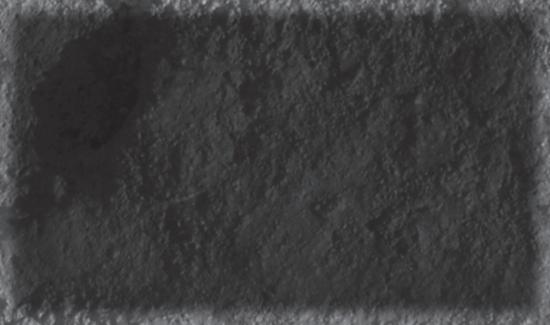
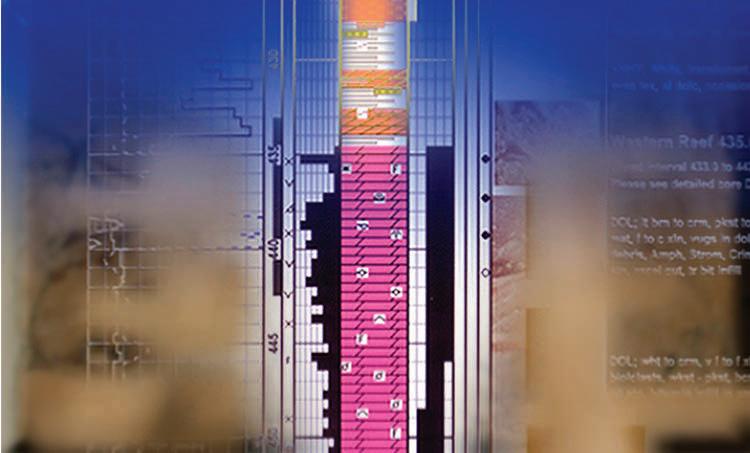



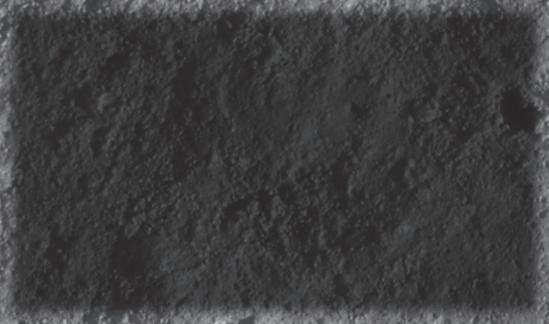










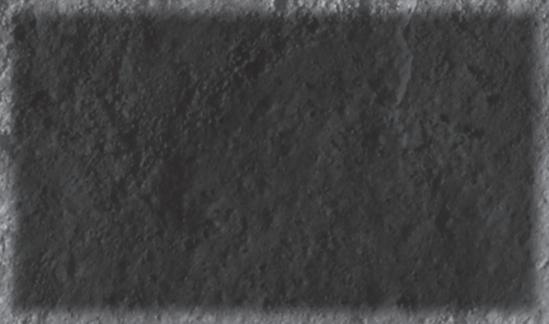


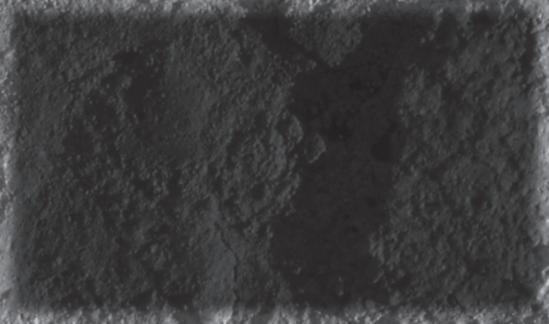

mystery. Over the years, the banquet evolved into a more casual affair. Currently, there is a Spring Banquet, no dance, and less formal dress. Awards are handed out at the banquet, some serious, some not. Over the years awards have included the Michael D. Welch Award, Leadership Award, Sports Award, President’s Award, John B. Webb Memorial Trophy, as well as Athletic Supporter’s Award, Squeaky Shoe Award, Smoked Moccasin Award, Blue Goose Award, Rusty Hammer Award (Flin Flon Field Camp), and Crushed Can Award (Zortman Field Camp).
The heart and soul of the Ore Gangue is the coffee room (Figure 2, page 15). In the old engineering building, the original location of the Geology Department, it was located in the basement, a dark and dingy place. From the beginning, it was used as a storeroom as well as being a hangout for students between classes. Boxes of rocks, some allegedly radioactive, and cores were piled high at one end of the room. Over time, tables and chairs were acquired and countless hands of bridge and cribbage idled away the hours between classes. One of the more interesting stories revealed in the Ore Gangue minutes was the controversy over coffee being allowed in the student lounge. The idea of setting up a coffee urn to raise money for the Ore Gangue was
first proposed to the faculty in January 1963. The proposal was not met with enthusiasm. In February, the response from the faculty was that an urn could be set up in the washroom foyer, staffed by an Ore Gangue member and only at noon. The faculty cited what they felt were the poor economics of the proposal. The discussion bounced back and forth until November, when the faculty agreed to a proposal that the coffer urn could be run by Ore Gangue members in the student lounge at coffee breaks. December 1963 finally saw the initiation of selling coffee at 10 cents/cup. The profit from the first seven weeks of operation was $44, exceeding all expectations and in February of 1964, the proposal was made to purchase a larger urn. Unfortunately, the record of Ore Gangue minutes stops at around that time, so we don’t know exactly when that urn was purchased. However, Dave Kennedy, editor of The Concentrates in 1968-69, noted the acquisition of a new 80-cup coffee pot in his end-of-the-year message: “This chromeplated, spigot-bearing beast apparently spews forth a brew so powerful that any new student innocently taking a drink is immediately addicted to the habit of ‘Ore Gangueing’ for the remainder of his university days.” In a further illustration of the quality of the coffee, and likely an explanation of why it was so, Dave writes “thus exchanging my
pen for a gas mask, rubber gloves, and a cleaning brush, I will proceed to the dusty depths of the coffee room and clean out the coffee pot which has had a brew rotting in it for the past five months.” Another Ore Ganguer told the story that the force of the water upwards in the large percolator was so strong that a rock was placed in the basket, along with the coffee grounds, to prevent the top from flying off. The black coating that encrusted that rock was further testimony to the strength of the brew. One can only hope that the rock was not a radioactive ore, thus endangering the DNA of future generations.
Students who weren’t in geology rarely entered the coffee room, and did so at their peril. One Ore Ganguer tells the story of arranging to meet his new girlfriend at the coffee room. Upon descending cautiously into the basement, she stepped into “The Dungeon” and was confronted by guys smoking, eating lunch, playing cards, and generally “doing all of the things guys do when there aren’t any women around.” This occurred, of course, prior to the advent of many women geology students. Fortunately, a gallant Ore Ganguer saved the day by entertaining her until the tardy young man appeared. Sadly, during the summer of 1980, the old coffee room was filled with cement (Continued on page 18 ...)
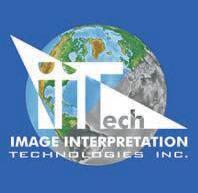


JeffRowe +16135207713(office) +16132180213(cell) jrowe@fugro.com www.fugro-gravmag.com
ZeevBerger +14032161845(office) zeev@iitech.ca www.iitech.ca Non-exclusivedataavailable
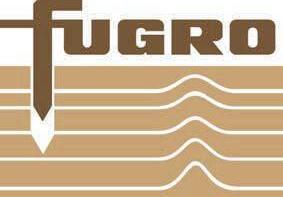
when renovations were done to stabilize the physics building in which it was located. The Ore Gangue lounge in the new geology building, which opened in 1986, is a much larger, well-lit space. One of the major changes, other than fresh air and natural light, was the presence of a TV. Students often watched sporting events together, and the occasional soap opera or cartoon. However, it serves the same function as the original dingy basement of being a place where students can just hang out, watch TV, take a break from the rigors of studying, and find support from fellow students.
Ore Ganguers got together for many informal gatherings throughout the year. One favourite spot was the Sutherland Bar, located on Central Avenue in Saskatoon a little more than a mile away from campus. Beer was cheap and the atmosphere was well suited to the student crowd. Stories about the Sutherland include streaking on St. Patrick’s Day by a certain young couple wearing nothing but green paint in the late ‘70s as well as the refusal of management to serve students until the return of certain missing tables and chairs. Nobody knows exactly how this happened, but beer glasses from the Sutherland found their way into the apartments and homes of numerous geology students.
Students organized many other social occasions: parties for Halloween, Christmas, or no occasion at all. Costumes were frequently involved and beer was always around. Through the years, Ore Ganguers organized funspiels, talent nights, pub nights, the End-of-Semesta Fiesta, and many others. The Ore Gangue also participated in campuswide activities. In 1974, the students created an ice sculpture of two flying Canadian geese with the title “Fly United” for a campuswide competition. After hours of artistic endeavor that lasted well into the evening and the consumption of significant quantities of beer, KFC was brought in and demolished in mere minutes. In addition, an Ore Ganguer who made his own beer left and came back with his latest brew. Another Ore Ganguer blames his ill-feeling the next day on the “green” beer. Stories from these activities are retold, often with embellishment, at Ore Gangue functions to this day.
Intramural sports have long been an important part of Ore Gangue activities. 1947 is the first mention of participation in intramural activities in the Ore Gangue minutes. The Executive was to be responsible for setting up teams. The Golden Jubilee (1909-1959) issue of The Concentrates notes that the winning of the Greig Cup for curling and the Donald Trophy for Tug-of-
War in 1940-41 were the highlights in the sporting history of the Ore Gangue to that point. The first intramural hockey team was organized in 1962. Although the teams were not known for their great hockey prowess, they provided great fun for participants and fans alike. And the team actually managed to win the season in the early 1980s. Broomball was an intradepartmental sport that enjoyed popularity for some years. The 1968-69 Concentrates described the division of the large number of participants into Hard Rockers, Soft Rockers, North Enders (Geophysics and Mining), and Old Timers (profs and grad students). The annual tournament was known as much for its after-party as for the games themselves. For many years there weren’t enough women students to form Ore Gangue intramural teams. Women students who were sportsminded often played with the girls from the College of Agriculture. By the 1980s, however, there were women’s squamish, soccer, floor hockey, and volleyball teams. During the 1983-84 school year the women’s teams did not have to default a single game all season due to participation on the teams by the increasing numbers of women geology majors. Another highlight that year was the first place finish of the women in the intramural volleyball league, the first time that had occurred in Ore Gangue history.
Western Canada: Slave Point, Swan Hills, Leduc, Grosmont, Jean Marie, Horn River Shales, Elkton, Shunda, Pekisko, Banff, Mississippian subcrops and anhydrite barriers in SE Sask., Bakken, Three Forks, Montney, Halfway, Charlie Lake, Rock Creek, Shaunavon, BQ/Gething, Bluesky, Glauconitic, Lloyd, Sparky, Colony, Viking, Cardium, Horseshoe Canyon and Mannville CBM, Oilsands Areas, Outcrops
US Rockies & Williston: Red River, Mississippian subcrops & anhydrite barriers (Bluell, Sherwood, Rival, etc), Bakken, Three Forks, Cutbank, Sunburst, Tyler, Heath, Muddy, Dakota, Sussex, Shannon, Parkman, Almond, Lewis, Frontier, Niobrara, Mesaverde shorelines, Minnelusa, Gothic, Hovenweep, Ismay, Desert Creek, Field Outlines, Outcrops
North American Shales: Shale plays characterized by O&G fields, formation limit, outcrop, subcrop, structure, isopach, maturity, stratigraphic cross-sections. Includes: Marcellus, Rhinestreet, Huron, New Albany, Antrim, Utica-Collingwood, Barnett, Eagleford, Niobrara, Gothic, Hovenweep, Mowry, Bakken, Three Forks, Monterey, Montney, Horn River, Colorado
Appalachian Basin: PreCambrian, Trenton, Utica-Collingwood, Medina-Clinton, Tuscarora, Marcellus, Onondaga Structure, Geneseo, Huron, Antrim, New Albny, Rhinestreet, Sonyea, Cleveland, Venango, Bradford, Elk, Berea, Weir, Big Injun, Formation limits, Outcrops, Allegheny Thrust, Cincinatti Arch, Field outlines
Deliverables include:
-Shapefiles and AccuMap map features
-hard copy maps, manual, pdf cross-sections
-Petra Thematic Map projects, GeoGraphix projects, ArcView map and layers files
-bi-annual updates and additions to mapping
-technical support
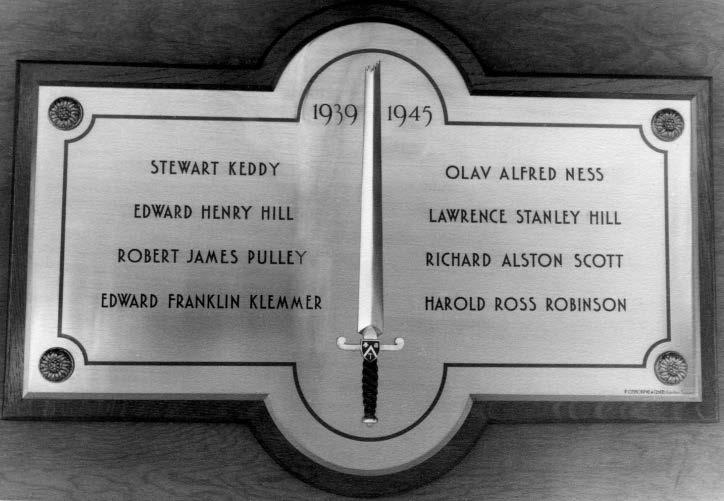
That year the men fielded teams in squamish, football, hockey, curling, volleyball, slo-pitch, and basketball teams, with less spectacular results. But a few years later, the men recorded a first-place finish in intramural hockey. The Sphincter Cup is awarded to the winner of the annual hockey game between the Geology and Biology departments. One Ore Ganguer cites his scoring a hat trick in the Sphincter Cup as his best OG memory and a lifetime highlight. All in all, Ore Gangue teams provided fun, relaxation, an additional excuse to drink beer, and a much-needed outlet in which to blow off steam.
The Ore Gangue and Geology Department have always participated in activities to promote the department. In 1937-38, Geology joined with the Engineering and Ceramics Departments to set up a show for other students exhibiting what each department had to offer. Over the years, this biennial event was repeated in conjunction with Engineering, Chemistry, and the Ceramics departments until the termination of the ceramics program in 1951. Ultimately, Geology Day was established as an annual Open House event held on the first Sunday in October, also known as Logan Day. William Logan is considered to be the Father of Canadian Geology and the Founder of the Geological Society of Canada. For the past few years, The Ore Gangue has organized a Career Night that is well attended by both industry and students.
An event that originated at the University of Saskatchewan in 1964 is the Western InterUniversity Geoscience Conference. This conference has been held for 48 consecutive years, with the location rotating amongst the
western universities. It is entirely studentrun, student-oriented, and provides an opportunity for undergraduate and graduate students to present their research, network with other students, find out about job opportunities, .......and drink beer. However, the event most remembered from WIUGC conferences is the annual bun fight that occurs at the banquet each year. The origins of the bun fight have been lost in the mists of time, but one particularly epic fight in 1980 was halted when Dr. Kupsch bellowed, “We are geologists; we do not throw buns at each other!” There is no evidence to suggest that this admonition had any effect on the ferocity of bun fights in subsequent years. 1980 was also the first year the Ore Gangue had a female president, Pat George. At the WIUGC she was presented with a commemorative plaque that consisted of a long cylindrical coral or sponge flanked by two gypsum rosettes.
The Geology Department and the Ore Gangue have a long tradition of helping their students. In 1938, the Ore Gangue Fund was established to benefit student and graduate members in the areas of educational facilities, establishment of student prizes or scholarships, or other purposes deemed appropriate by the trustees of the fund. Any money left over from the operating budget of the Ore Gangue was to be put into the fund. The first deposit was $20.62. The Ore Gangue Fund was the seed money for the Memorial Plaque Fund in 1945 that was created to honour Ore Gangue members who lost their lives in World War II (Figure 3). It was designed by Professor A. L. C. Atkinson and unveiled in November 1948. It hung over the door to the Geology Department in the
east wing of the Engineering Building until the department moved into its own building in 1986. It now resides on the wall opposite Room 161 in the new building. Following that, the leftover money from the Plaque Fund was rolled over into the Ore Gangue Memorial Fund, established by a bequest from Lt. Harold R. Robinson, B.A. ’41, in 1945. In 1949, two prizes were established from this fund: the OGMF prize for Leadership and the OGMF prize for highest academic standing. These prizes are still awarded today. The Leadership Award is determined by the Ore Gangue Executive and presented at the annual Ore Gangue Banquet. The Highest Academic Standing Award is presented at the Arts and Sciences Awards night around the same time as Spring Convocation.
The 1959 issue of The Concentrates announced the initiation of a scholarship named after F.H. Edmunds, first professor of the Geology Department, and J. B. Mawdsley, first Head of the Geology Department. The goal was to fund a $400/year scholarship. Surveys of graduating Ore Gangue members at that time indicated that they were willing to donate $30 each. Today, the scholarship is awarded to a student who has completed his/her second year in the areas of Geological Sciences or Geological Engineering and carries a value of $2,000/year.
Ore Gangue alumni have a strong presence the oil industry in Calgary. The annual Ore Gangue Golf Tournament began in 1999. It has been held at several golf courses in and around Calgary and the weather has varied from warm and sunny to wind and sleet over the years. Through the sale of “mulligan” certificates not only were golf scores improved, but $12,000 has been donated to the Michael D. Welch Memorial Book Prize Fund. As well, over $25,000 has been donated to the Alumni Fund. Currently, a committee has established the Ore Gangue Alumni Bursary Fund. Its purpose is “To provide financial support, reward academic performance, and recognize contributions to the Earth Sciences student community for students in the Department of Geological Sciences at the University of Saskatchewan who are members of the Ore Gangue.” The fund has been structured as a bursary to take into account financial need as well. In order to provide long-term, significant financial assistance to as many as two third-year and two fourth-year students per year, at least $500,000 must be raised. Any Ore Ganguers so inclined can go to the Ore Gangue website where there are three different ways set up for you to make your donation.
Ore Ganguers also take care of each other (Continued on page 20...)
in non-monetary ways. Many times an Ore Ganguer already working has taken a new grad under his/her wing and acted as a mentor. The annual Christmas Party and Golf Tournament in Calgary are a means of networking and possibly finding a job for new grads. The telephone/e-mail grapevine is active and efficient at disseminating news and requests regarding Ore Ganguers.
The first field trip organized by the Ore Gangue was to the Eagle Hills and North Battleford in 1937. The next recorded field trip, according to the 1959 issue of The Concentrates, was in 1953 to the Little Rocky Mountains in Montana. This trip was so successful that it became the site of one of the annual field camps, headquartered in Zortman, Montana. The trip was the “soft rock” field trip, where sedimentary rocks are studied, along with igneous intrusives. The Flin Flon, Manitoba trip is the “hard rock” trip to the metamorphic rocks on the edge of the Precambrian shield. Other field trips organized through the years were to mineral deposits in Manitoba; Ardmore, Oklahoma; a Lock Up Your Rocks tour through Utah, Arizona, and New Mexico during Spring Break in 1992; the SEG Conference in New Orleans in 1998; and Recent Carbonate Environments in Yucatan, Mexico in 2004.
The Flin Flon Field Camp was the first regular camp for Geology majors at the University of Saskatchewan. It was likely initiated by Dr. Mel Stauffer, who conducted structural geology research in the Flin Flon area, and reflected the hard rock focus of the Department at that time (Figure 4). Accommodation in Flin Flon was in a hotel or cabins associated with the hotel. Among the memories recalled by Ore Ganguers was appreciation of the fascinating rocks, beautiful scenery, and the fact that the bar was located within this particular student’s field area. Another Ore Ganguer recalled that Dr. Stauffer somehow ended up in the hotel swimming pool, fully clothed, along with other field camp participants. Building a fort out of the furniture in his Flin Flon hotel room and passing out in it is yet another story from an Ore Ganguer who shall remain anonymous.
Accommodation at Zortman varied through the years. Apparently, it started in hotels/ motels, switched to cabins, then back to a hotel and finally to trailers in the 2000s. Occasionally, students ended up sleeping on cement garage floors. In 1962, the small staff at the hotel was so overwhelmed by the size of the group that the students effectively took over the preparing and serving of breakfast. In 1980, there were sufficient cabins for all of the guys but not the three girls attending. They stayed in a tent for the duration. Luckily
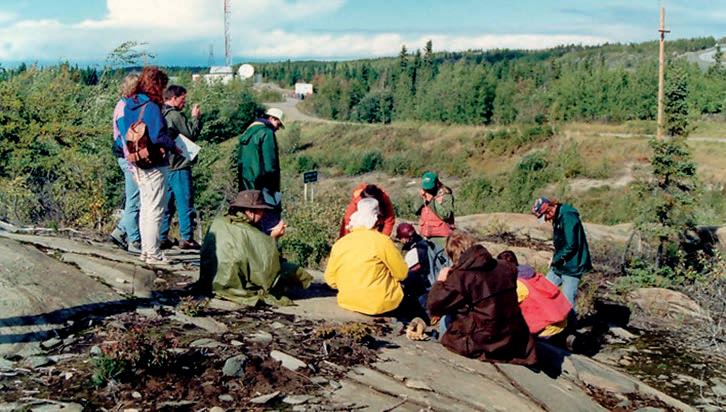

the weather was good and one of the women remembers, “I don’t recall it being a hardship... and we didn’t have to put up with the guys burping, farting, and generally being guys!” Stories from the Zortman camp abound. There was the time, in 1962, when students went to the rodeo in nearby Mobridge with Ethel, who had been the owner of the local brothel when the mine was still open. Or the incident in 1973, when students rolled rocks down the hillside in Alder Gulch with Dr. Caldwell. An unnamed inebriated student was locked in the Zortman jail (Figure 5) in the middle of the main street. Only Dick, the owner of the bar, had the key to release him. One student recalls being totally confused as to what he should be doing because the professor spent all of his time panning for gold. Ore Ganguers from the early ‘90s recall hot springs, professors, and the lack of bathing trunks, while those from the late ‘90s have a favourite memory involving cars, guns, and the Zortman bar. But the best story is another one from 1962, in which two students got into an argument in the bar over whether hard-
rock or soft-rock geologists were tougher. The door to the bar opened and a cowboy entered. One student rushed over and asked, “Can you settle an argument? Who is tougher, hard-rock or soft-rock geologists?” The cowboy looked the student straight in the eye and said, “Cowboys” and kicked the student in a very sensitive spot.
Stories about the Ore Gangue are endless. Each student has his or her special moments, funny moments, frustrating, and triumphant moments. The refrain repeated over and over again during the research for this article was that the Ore Gangue provided a home away from home for geology students. Geology departments at many universities have the reputation for being closely-knit communities, but few, if any, can match the Ore Gangue of the University of Saskatchewan for longevity and importance in students’ lives.
Note: Names have been largely omitted from this article to protect the innocent...and the guilty.
T UESDAY, M AY 15, 2012
5:30 PM – 7:00 PM
TELUS CONVENTION CENTRE
M ACLEOD H ALL D
C ALGARY, A LBERTA
The Canadian Society of Petroleum Geologists annually presents a variety of awards to recognize technical achievements and excellence in volunteerism. The 2011 CSPG awards will be presented at the 2012 Awards Ceremony on Tuesday, May 15, 2012. The event will be held at the TELUS Convention Centre, Macleod Hall “D” from 5:30pm to 7:00pm and although it is held in conjunction with the geoConvention: Vision 2012, it is open to the public.
Please join us to honour the volunteer contributions and technical excellence of your fellow CSPG members.
Presentations of the following awards will be made:
TECHNICAL AWARDS
STANLE Y SLIPPER GOLD ME DAL
Edward Everett (Ned) Gilbert
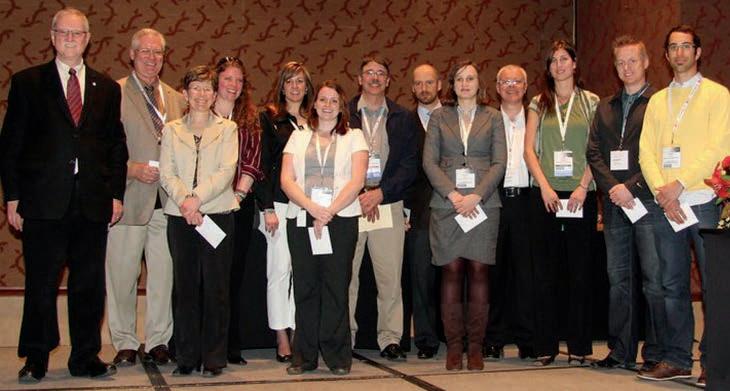
Darrel Long
HONORARY M EM BERS HIP
*to be presented at the 2012 Long-Time Members Reception*
Gerry Reinson
Roger G. Walker
comprehensive domestic and international geophysical workstation support specialists
Seismic Data Room Rental Service (two secure private data rooms)
Divestiture Seismic Data Room Support (four portable workstations)
Seismic Project Conversions (between interpretation software)
Seismic Data Loading Service
Synthetic and 2D Model Generation
Georeference Service (Coordinate Transformation of Raster Images)
Geographic Coordinate Conversion Service
Well Location Plat Generation
Seismic Data Management Service
Professional Montage Display
LIN K AWARD
Stephen Grasby ME DAL OF M ERIT
Tim McCullagh
Bruce Hart
VOLUNTEER AWARDS PRE SIDENT’ S AWARD
Paul MacKay
H.M . HUNTER AWARD
Timothy Bird
Graeme Bloy
TR ACKS AWARD
David Garner
Greg Lynch
Dennis Meloche
Trent Rehill
Bob Potter
PARTNERS HIP TR ACKS AWARD
Rob McGrory
SERVICE AND VOLUNTEER AWARDS
For a listing of recipients please see www. cspg.org
We will also be recognizing our Technical Luncheon and Technical Division speakers, Short Course and Field Seminar instructors and leaders, and Honourary Address speakers at this event.

















Telus Room 104-106
Telus Room 101-102
Glen Room 201-202
Carbonates from Canada and AbroadDr Eric W. Mountjoy Honorary Session I
Time Lapse Seismic
Seismic Fracture Analysis I
Structural and Tectonic Styles of Fold and Thrust BeltsDr Eric W. Mountjoy Honorary Session II
Drilling & Optimization
Seismic Fracture Analysis II
Petroleum Systems of the Western Canada
Sedimentary BasinDr Cindy Riediger Honorary Session
Petrophysics: Advancements
Reservoir Characterization I
Glen Room 203-204 Seismic Acquisition Seismic Processing I Seismic Processing II
Glen Room 208-209
Microseismic IMicroseismic II
Macleod Hall A Clastic Sedimentology I Clastic Sedimentology II
Macleod Hall B
Macleod Hall C
Macleod Hall D
Heavy Oil & Oilsands I
Heavy Oil & Oilsands II
Petroleum Systems of the Western Canada
Sedimentary BasinDr Cindy Riediger Honorary Session
Carbonate Sedimentology
Rock Physics
Applications of Sequence Stratigraphy
Education & Mentorship Regulatory
Reservoir Characterization II Geomodeling
Seismic Processing III
Microseismic Processing Microseismic III
Tight Gas: Montney
Unconventional Clastic Resource Plays: Bakken
Future Petroleum Resources of Canada: Eastern Canada and Its Borderlands
Future Petroleum Resources of Canada: Amerasian Basin and Its Borderlands
Future Petroleum Resources of Canada: Arctic Archipelago
Tight Gas: Upper Mannville & Spirit River Groups
Unconventional Clastic Resource Plays: Cardium & Viking
Seismic Processing IV
Structural Interpretations
Seismic Visualization
Seismic Processing V Seismic Processing VII
Unconventional Oil & Gas from Canadian Shales I
Unconventional Oil & Gas from Canadian Shales II
Seismic Processing VI
Seismic Processing VIII/ Gravity & Magnetics
Heavy Oil: Carbonate Triangle International
Future Petroleum Resources of Canada: Arctic Mainland
Future Petroleum Resources of Canada: Unconventional Resources East Coast Conventional


CSEG Special Session






















The two-day core conference will once again be held at the ERCB Core Research Centre, the world’s largest and most functional facility of its kind. As in the past, the core conference will continue to include displays ranging from conventional to unconventional exploration, updating and presenting new insights into understanding the rocks. View core displays, listen to informative presentations and partake in networking luncheons and the annual Core Meltdown.
Sponsored by:
Lithofacies Analysis and Depositional Scenarios for the Rock Creek Member and “Niton B” sandstone of the Fernie Formation in West-Central Alberta
Samuel K. Williams, Stefan T. Knopp, Federico F. Krause, and Terry P. Poulton
Entrenched Channels within the Mississippian Frobisher
Beds of Southeast Saskatchewan: Tidal Influence on Reservoir Quality
Don Kent and John Lake
Reservoir Quality Development in the Oligocene of the Topkhana-1 Well, Block 39, Kurdistan, Iraq
Jean C. C. Hsieh, Normand Begin, and Ross Deutscher
Recognition of Intra-Field Variability in Contact Styles, An Example from the Hoadley Barrier Complex in South-Central Alberta
Jennifer Dunn
Water Disposal in the Upper Elk Point Carbonates under the Athabasca Oil Sands Area, N.E. Alberta
Michael B. Rogers
A Portable Core Imaging Scanner
Randolf S. Kofman, Lucas L. Duerksen, Douglas R. Schmitt, and Todd Brown
Integrated Ichnology and Sedimentology of Mixed Riverand Wave-Influenced Delta Complexes, Upper Cretaceous Basal Belly River Fm., Central Alberta, Canada
Brittan M. Jones and James A. MacEachern
The Montney-Doig Boundary: From Log to Core to Biostratigraphy
Nick Wilson, John-Paul Zonneveld, and Mike Orchard
Reservoir Characterization of Burrow-Mottled Dolomites: Devonian Wabamun Group, West-Central Alberta, Canada
Greg M. Baniak, Murray K. Gingras, and S. George Pemberton
Core Examples from Modern Estuarine Tidal Bars, Tillamook Bay, Oregon
Rares Bistran, David Herbers, Murray Gingras, John-Paul Zonneveld, and S. George Pemberton
Controlling Chaos: A Core-Based Approach to Managing the Complexity of the Upper Devonian Grosmont Formation Bitumen Reservoirs
D.H. Greggs and Murray Gilhooly
The Duvernay Formation (Devonian): Sedimentology and Reservoir Characterization of a Shale Gas/Liquids Play in Alberta, Canada
L. Dunn, G. Schmidt, K. Hammermaster, M. Brown, R. Bernard, E. Wen, R. Befus, and S. Gardiner
The Freshwater to Brackish Channel-Dominated Transgressive Upper Belly River Group, Dinosaur Provincial Park, Alberta
Jennifer J. Scott, Murray K. Gingras, David A. Eberth, and S. George Pemberton
Duvernay Shale – An Unconventional Reservoir
Ian G. Hunter and Geoff Wilcox
Exploration Approach and Learnings from a Carbonate-Rich “Shale”: the Utica
Marianne Molgat, Jean-Yves Chatellier, Lynne Davies, and Scott McLellan
Rocking the Viking: Reservoir Quality and Net Pay Determination in the Bioturbated (Shaley Sand) Viking Formation of Western Canada
Patricia Jans, Michael Shepley, George Magarian, Joe Recsky, and Tristan Rugg
Wabamun, Bakken Equivalent Exshaw, and Banff Formations in Core, Cuttings, and Outcrops from Southern Alberta
Tim H.D. Hartel, C. Willem Langenberg, and Barry C. Richards
Comparison of Conventional Density and NMR Porosity with Core Porosity from the Montney & Doig Phosphate in the Monias area, N.E.B.C.
Craig Smith, Steven A. Aitken, and John M. Behr
Paleozoic Stratigraphic Framework beneath the Muskeg River Mine (Twp 95, Rge 10-11W4): Controls and Constraints on Present Day Hydrogeology
Robert Mahood, Matthijs Verhoef, and Frank A. Stoakes




























Exhibitor Listing






Aarhus Geophysics APS 1013
AGAT Laboratories Ltd. 1004 Alberta Geological Survey 922 ALT - Advanced Logic Technology 703

Apache Canada Ltd. * Associated Geosciences Ltd. 904
Association of Professional Engineers and Geoscientists of Alberta (APEGA)** 705
Baker Hughes 516
Blueback Reservoir Canada
Burgess Shale Geoscience Foundation*
Calgary Rock & Materials Services Inc.
Canadian Association of Oilwell Drilling Contractors*
Canadian Discovery Ltd. 602
Canadian Society of Exploration Geophysicists 2001
Canadian Society of Petroleum Geologists 3003
Canadian Well Logging Society 2002
Canmore Museum and Geoscience Centre*
Centre for Affordable Water & Sanitation Technology*
CGGVeritas 801
Continental Laboratories (1985) Ltd. 902
Core Laboratories Canada Ltd.
CSEG Foundation*
Datalog
| By Kirk Osadetz, CSPG President 2011
The President’s award is the highest CSPG volunteer honour. It is awarded for sustained and distinguished service to the Society. Recipients are selected by the President at the end of his term. Past winners share the traits of providing exemplary leadership in a variety of roles and capacities that the Society recognizes as a model of service and achievement to be emulated. Many recipients continue their contributions to Society programs and events, such that this award often provides a milestone in a distinguished career of exemplary membership.
It is my pleasure to present the 2011 President’s Award to Paul MacKay. Paul receives his President’s Award in recognition of his distinguished contributions and leadership to the revitalization of the CSPG’s scientific program, its scientific publications, and the annual geoConvention, especially acknowledging his contributions to “geoConvention: recovery 2011.”
The scientific program has been the cornerstone of the last half-decade of revitalization that lies at the core of the CSPG’s renewal process. From its inception, and at its heart, the CSPG is a scientific society that provides mechanisms for the sharing and debate of new data, knowledge and concepts. We have come through challenges, but our future is as bright and promising as any in the history of the Society. As the provinces of the Western Canada Sedimentary
Basin become the engine of growth in the national economy the CSPG is providing both scientific leadership and innovation in the earth sciences that ensure this future.
Through the efforts of Co-Chairs Paul Mac K ay, Rob McGrory, and Satyaki Ray the geoConvention: recovery 2011 provided a watershed scientific event that signalled the success of many years of hard work by many members of the Society to demonstrate that we and our sister societies have remained true to our scientific mandates and methods. At a time when the marriage of new technologies with modern geoscience concepts has made every rock a potential reservoir the recovery 2011 event transformed and set the standard for renewed scientific discourse at our annual joint meeting. By instituting a new and integrated vision that actively sought and won the participation of academic and industrial leaders in the geosciences, engineering, and business sectors, our recovery 2011 geoConvention set a new standard, not just for our own scientific program, but for Canadian earth sciences in general. Both Paul and Rob have committed to ensure that the legacy of this renewal will be continued through their participation in the geoConvention organizing committee as the CSPG and CSEG renegotiate their agreement. While there have been successful prior conventions, never before have we looked so strongly outside of the methods of our own disciplines for the impact and

outcomes that show how our Geoscience is transformed into value for our members, our employers, and our Society.
Additionally, Paul also provided new course offerings to our revitalized Continuing Education Program on the subject of fracturing. He has also provided leadership and instruction in the field, at our Division meetings, at Technical Luncheons, at our Symposia, as well as through our peerreviewed technical publications – most notably with his contributions to the Triangle Zone volume of the Bulletin of Canadian Petroleum Geology, and also with a series of articles in the Reservoir.
I am certain that Paul would be the first to remind us that he shares this award with many people, for our Program is the work of many hands; but at its heart it requires both vision and leadership. Several previous and the current Executives have provided a vision of our renewal, but in many ways, Paul has played an exemplary and unique leadership role that has made that vision a reality. It is therefore fitting that we present this award to Paul both on the merits of his own achievements, as well as the model of our collective achievement that is demonstrated by a renewed and invigorated CSPG. He is incidentally the 2012 Vice-President and we all look forward to his continued vision and leadership in 2013. Congratulations Paul!

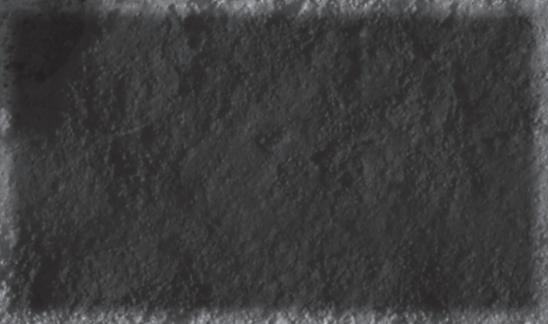
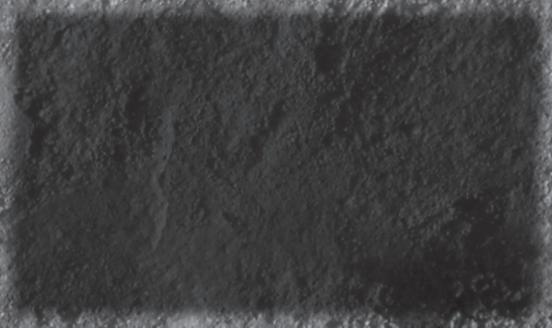
3300, 205 - 5th Ave SW Calgary, AB T2P 2V7 Tel403 726 0666 Fax403 264 1262 Cell403 819 2516
farhat@sableconsultants.com SABLECONSULTANTS.COM

Summary prepared in October 2011 by Clinton R. Tippett, Bill McLellan, and Bob Rintoul. Approved by the Stanley Slipper Gold Medal Committee comprised of Clinton R. Tippett, John Hogg, and Peter Harrington.
The Stanley Slipper Gold Medal is the Canadian Society of Petroleum Geologists’ most prestigious award. This award was established in 1989 to honour individuals who have made outstanding contributions to the science of petroleum geology and petroleum exploration in Canada. The award is named after Mr. Stanley E. Slipper, the first President of the Alberta Society of Petroleum Geologists (later C.S.P.G.), a pioneer and icon of early exploration efforts in Alberta.
The 2011 recipient is Edward Everett Gilbert, know to all as Ned. Ned Gilbert was born on May 3, 1922 in Madison, Wisconsin. While attending the University of Wisconsin and studying geology under the well known sedimentologist Professor Twenhofel, he made, during WWII, two unsuccessful attempts to join the U.S. military. Although his university studies were incomplete, he then accepted a job doing field geology with the Sun Oil Company in Nova Scotia that was followed by a stint in Evansville, Indiana doing wellsite geology. In January 1945, Ned arrived in Calgary as Sun Oil’s sole employee in western Canada and took up residence at the Palliser Hotel. His job was to develop geological prospects, type reports, and make recommendations to Sun’s head office in Philadelphia. He convinced Sun management of the merits of certain areas, coordinated geophysical surveys, and quickly leased 500,000 acres in the Coronation area, 500,000 acres in the Sibbald area, and another 1.3 million acres in Saskatchewan. This led to the discoveries of the Sibbald Field, the Superba Field, and the Hamilton Lake Field. Late in 1946, Ned returned to university to complete his degree.
Ned resumed work for Sun Oil in Calgary in 1947, where Sun’s activity and office continued to expand in the aftermath of the Leduc discovery beyond the experience of the youthful geologist. Consequently, Sun Oil appointed George Dunlap to run the Calgary operation, and Ned chose to become Land Manager. In the early 1940s, Sun Oil chairman J. Howard Pew had become concerned about the eventual decline in conventional oil production in the U.S. and the company began researching the Alberta

oil sands. Early in his Western Canada career Ned became keenly interested in the oil sands and had frequently met with Dr. Karl Clark at his Edmonton laboratories during the 1945-1946 period. In 1948, Ned succeeded in obtaining two oil sands permits adjacent to Dr. Clark’s lab in Bitumount, near Fort McMurray, that became Suncor’s initial oil sands mining site. However, in April 1951, George Dunlap decided, together with Sun’s senior management, that the company was no longer interested in the oil sands, as their development was too expensive and uncompetitive in the face of abundant conventional crude oil supplies. This was a common opinion throughout Alberta’s oil industry at the time. On September 21, 1951, Ned wrote a letter to Mr. Dunlap with copies to senior management, effectively taking his
plea for continued oil sands activity over his boss’s head. In it he said:
“I will not attempt to speak for the engineers and geologists but I know of no other place in the world where I can, if I am first to apply for a tar sands permit, obtain proven oil reserves for less than a dollar and forty cents per acre and where, by spending an additional amount of money equal to the cost of drilling wells on a similar block of land in, for example, the Redwater Field, I may set up a separation and refining plant and probably solve a major part of my transportation problems.”
Ned’s arguments were persuasive and this letter effectively changed Sun’s history and consequently the history of Alberta and
(Continued on page 28 ...)
the development of the oil sands. The two permits that Sun Oil acquired subsequent to this momentous decision were disparagingly called “Gilbert’s Folly” at the time. These permits are now Suncor’s Firebag location.
By 1963 Sun had revived its interests in the oil sands and had invested in the local operator Great Canadian Oil Sands. G.C.O.S. had, in 1955, begun discussions with the Alberta Government about the initiation of commercial exploitation of the deposits and, in 1960, had made a formal application to the Conservation Board for a permit to undertake construction of a facility capable of producing 31,500 bbl/d of synthetic crude oil, located on a leased Sun Oil property at Mildred Lake. With Sun’s financial involvement, the G.C.O.S. project moved ahead with an expanded scope of 45,000 bbl/d and in 1967, Canada’s centennial year, the G.C.O.S. mine and processing facilities began operations. Ned’s vision for the oil sands had been validated and although oil sands operations continued to struggle financially for many years, G.C.O.S. ultimately led to Syncrude in 1978 and several other major operations since then.
In 1964, Ned identified the potential of rich oil shale deposits in Saskatchewan. As there were no regulations covering oil shale exploration in Saskatchewan, Ned negotiated a set of regulations with the Provincial Government that remained in force until 2007. Sun acquired 3.5 million oil shale exploration acres in Saskatchewan and Manitoba, but with the Alberta oil sands project proceeding at a rapid and expensive pace, they ultimately abandoned the will to develop these oil shales assets.
Ned’s vision and advocacy also extended to the Canadian Arctic Islands and Northwest Territories. While Sun Oil was not initially interested in exploring in Canada’s North, Ned persevered and subsequently negotiated the acquisition for the company of the exploration rights between the Arctic Islands and beneath the ice-covered waters held by Global Marine. In 1972, while Ned was Exploration Manager in Canada, Sun merged with Sun Ray. Ned resigned, but has continued his interests in the oil industry since then as a consultant, providing expert advice in a variety of areas including minerals, oil sands, oil shales, and coal. In 1984, Ned, together with Bob Schulz, and a financial endowment raised by the Canadian Association of
Petroleum Landmen, founded the only Petroleum Land Management concentration at the university level in Canada. He served as Co-Director with Mr. Schulz, assisting in the original organization, establishing the curriculum, hiring full-time and guest instructors, and teaching for eight years in the new Petroleum Land Management program at The University of Calgary. Today, Petroleum Land Management is a fourth-year concentration of courses in the Bachelor of Commerce Degree Program of the Haskayne School of Business at the University of Calgary.
Ned is a very long-time member of the C.S.P.G. Ned chaired the 1974 C.S.P.G. Offshore Symposium and, amongst his geological credentials, has an honorary membership in the C.S.P.G. (1996). He was the 1999 President of the Canadian Division of the A.A.P.G. and was awarded an honorary membership in the A.A.P.G. (2001) as well. He is a founding member of the Calgary Petroleum Club and most recently was inducted into the Canadian Petroleum Hall of Fame (2011).
Ned is very well qualified to be the recipient of the 2011 Stanley Slipper Gold Medal.







Courses include:
• Getting Started in Fluvial Stratigraphy
• Fundamentals of Siliciclastic Sequence Stratigraphy
• Rocks, Pores & Capillary Pressure: Understanding Reservoirs & Seals
• Quantification of Geologic Risk
• Geological Interpretation of Seismic Data
• Risk Reduction for Plays & Prospects Using Quantitative Show
• Reservoir Engineering for Petroleum Geologists
• Image Log Interpretation
• Formation Evaluation of Thinly-Bedded Reservoirs
• Exploring for Stratigraphic Traps Using Multi-well Pressure/Depth Plots
• Regional Stress and Reservoir Geomechanics
• 4D Evolution of Contractional Terranes
• Hydraulic Fracturing for Geologists
Hosted by the Norris Conference Center:
304 Houston St. Ft. Worth, TX 76102
Phone: 817-289-2400
Fax: 817-289-2411 Special
Registration and information:
Toll-free (U.S. and Canada) 888-338-3387, or 918-560-2650
Fax: 918-560-2678
E-mail: educate@aapg.org
Download a registration form at: www.aapg.org/education/sec.cfm

In today’s environment, opportunities are gone as quickly as they appear. Very few organizations have the resources to stay current with developing trends as well as proven reservoirs. Many organizations are forced to make quick decisions about opportunities in reservoirs they may not fully understand.
NuTech Energy Alliance works with clients to shorten learning curves. As a leader in unconventional reservoir characterization, NuTech’s clients make faster decisions resulting in earlier commercial returns. NuTech provides the resources and a database of comparative knowledge to significantly impact our client’s decision-making process.

| By Fatima Halari

Nicolas Steno’s Principle of Original Horizontality states that layers of sediment are originally deposited horizontally under the action of gravity. That is precisely what the past four years in the Geology major at Mount Royal University (MRU) has been for me. Each year provided me with a strata of horizontal knowledge that built upon the last, under the action of the gravity, which we call life. May 2012 marks the beginning of the structural deformation of that strata as the first class of students will graduate from MRU’s B.Sc. Geology program. This first graduating class from the Geology major will consist of 15 students with future graduating classes expected of around 24 students per year. The entire geology program consists of approximately 70 students spread between 2nd-, 3rd-, and 4th-year classes.
I have had the opportunity to study alongside a great group of 25 students. The small class sizes and low student-to-professor ratio has provided a favourable environment for learning that allows for quality time with rock samples and makes it possible to readily get help from experts in the subject. The Science Wing extension has provided two new well equipped teaching labs with the space and facilities for student study, including a social room with a coffeemaker for those late-night study sessions!
As a student at MRU I have had the privilege to learn from a diverse and unique staff of six full-time professors and 12 part-time faculty members with a wide range of interests and specializations. Dr. Paul Johnston, Mount Royal’s very own Indiana Jones, has expertise in bivalve evolution and the UNESCO World Heritage site at the Burgess Shale. Dr. Michelle DeWolfe leads an exciting hard-rock field school where students map igneous terrains and learn about her specialization: the VMS deposits of the Flin Flon district. Stratigraphy, sedimentology, and petroleum geology are never boring with our fine British import, Dr. John Cox, a great addition to MRU who
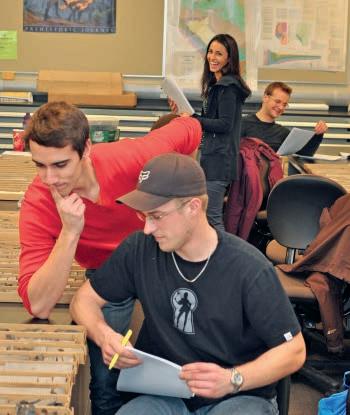
specializes in the Bow Island Formation and keeps students on their toes both in the classroom and on the squash court! Stresses are clearly explained (structural stresses that is!) by Dr. Katherine Boggs, an expert of Canadian Cordilleran metamorphic and structural geology. Our latest addition to MRU is Dr. Jeff Pollock who brings a great (geo)chemistry to the learning environment with his knowledge of Appalachian rocks and isotope geology.
I look back on the past four years at MRU and feel lucky to have studied Geology at an institution that has long valued an integrated hands-on approach to learning. I have had the opportunity to make life-time friends and a network of professors who call me by name. As a class, we have enjoyed getting our hands dirty mapping and logging core and priming our presentation skills. The inaugural graduating class of the Geology major are well prepared for their geology careers whether they choose to explore for oil in Alberta or to search for diamonds in the North. Mount Royal has taught students not only how to understand the mountains, but more importantly how to move mountains.
Why hire a Mount Royal Geology graduate? Because we are passionate about rocks, are eager to bring a high skill level into your workplace, and promise to leave no stone unturned!
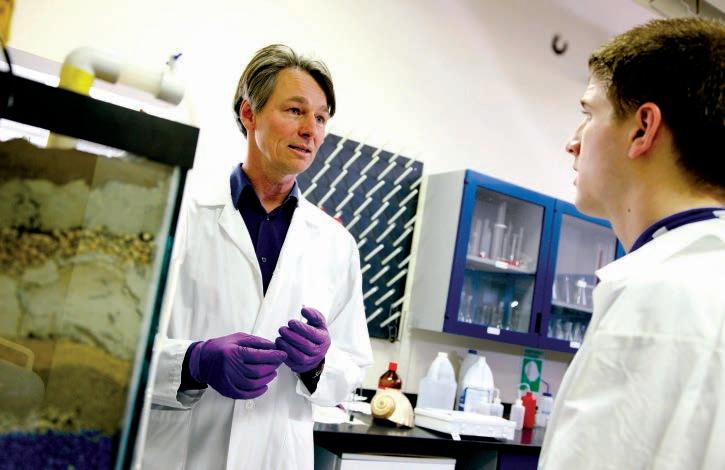


We began by providing cutting edge Quantitative Interpretation (QI) services to help in situ oil sands producers maximize recovery with detailed and accurate reservoir predictions.
This quickly began attracting attention among those seeking the same high degree of precision in their conventional and unconventional environments.
To better reflect our growing and diversified client base, we have adopted a new name – and a flexible new approach to business based on collaborative Quantitative Interpretation solutions that are scalable to your needs and project parameters. The transformation begins May 1st.



|
By S.C. Maxwell (Schlumberger) and M. Norton (Progress Energy)
This article is the fourth in a series on microseismic monitoring of hydraulic fractures and focuses on a case study investigating geological controls on hydraulic fracture variability. Microseismic hydraulic fracture images have shown that fracture networks can be different not only between different reservoirs in different geologic settings but can also vary significantly over relatively short distances along the length of a horizontal well. For example, hydraulic fractures have been found to change from simple fracture planes to complex fracture networks, fracture directions change, and the fracture dimensions of height and length can also dramatically change even over the length of a single horizontal well (e.g., Rich and Ammerman, 2010). Furthermore, fracture asymmetry (i.e., preferentially growing in a certain direction) has been observed to rapidly change between neighbouring stages. These observations suggest that reservoir heterogeneity, in terms of rock fabric, stress, and pore pressures are important factors contributing to this variability. The variability also points to the value of integrating reservoir characterization and microseismic monitoring: where the results can be used to better design the hydraulic fracture stimulations and better understand the reservoir drainage for subsequent well placement. In this paper microseismicity, injection responses, and seismic reflection data is integrated to understand the variability of hydraulic fractures for a case study in the Montney shale. The data integration is used to investigate the geologic and geomechanical conditions controlling the hydraulic fracture variability.
Here we investigate the stimulation of three horizontal wells in the Montney Formation in NE BC. Multiple stage stimulations were performed along the length of each horizontal well, with the associated microseismicity recorded for each of these stimulations. AVO surface seismic reflection data was inverted for Poisson’s ratio through the reservoir, and an edge detection algorithm (ant tracking) was also applied to the reflection data to assess pre-existing faults and fractures (Maxwell et al., 2010). Figure 1 shows a superposition of the microseismic, Poisson’s ratio, and edge detection data,

indicating that the microseismic activity appears to concentrate in regions of low
Poisson’s ratio. There is also a prevalence of pre-existing fractures or faults sub-parallel to the well trajectories. Clearly there is evidence of reservoir heterogeneity, which is controlling the hydraulic fracture geometry. In this paper we will further examine these observations and attempt to answer the following questions:
• Why are the microseismic events large along Well C?
• Why are there no microseismic events towards the NE?
• Why do the microseismic events tend to go towards the SW?
• Why is the geometry of the microseismic events different near Well A?
To dig deeper into the microseismic response, seismic moment density (measure
(Continued on page 34...)
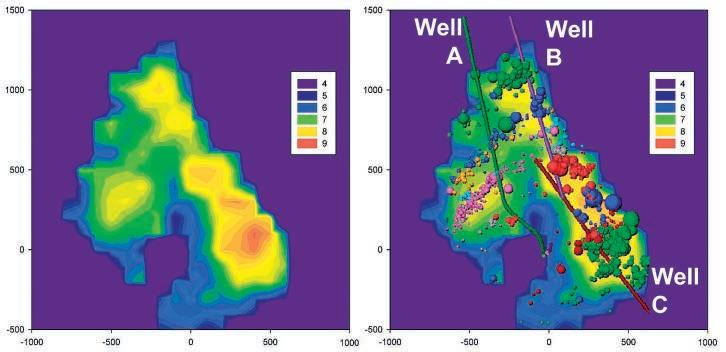


(...Continued from page 33 )
of microseismic strength or deformation), and b -values (slopes of frequencymagnitude distributions) were computed. Seismic deformation and b -values are useful microseismic attributes to discern if hydraulic fractures result in fault activation (Maxwell et al., 2010). Hydraulic fractures intersecting pre-existing faults generally results in increased microseismic magnitudes as well as lower b -values. For each well, the stages closest to the monitoring well were examined, where the location accuracy and signal-to-noise ratio was highest. In this case, seismic moment density (Figure 2, page 33) shows a region of relatively high microseismic deformation following a trend approximately parallel to the NW-SE trajectory of the southernmost well C. b -values (Figure 3, page 33) are approximately 1 in this region of high deformation, suggesting a fault activation mechanism. In contrast, the microseismicity associated with well A define a clear NE-SW trend and have a higher b -value. The moment density is also smaller for these events. These results for well A are more typical of a simple planar hydraulic fracture parallel to the expected maximum stress direction. Composite fault-plane solutions for these two clusters of events also showed that the events associated with the high moment density and low b -value near Wells B and C are consistent with a shear slip striking in the NW-SE direction (Maxwell et al., 2011). The hydraulic fracture-related events near well A following the NE-SW trend are consistent with a shear strike-slip in that direction.
Injection data during the hydraulic fracture stimulations were also investigated. At the end of the injection, the instantaneous shutin pressure (ISIP) was examined as a measure
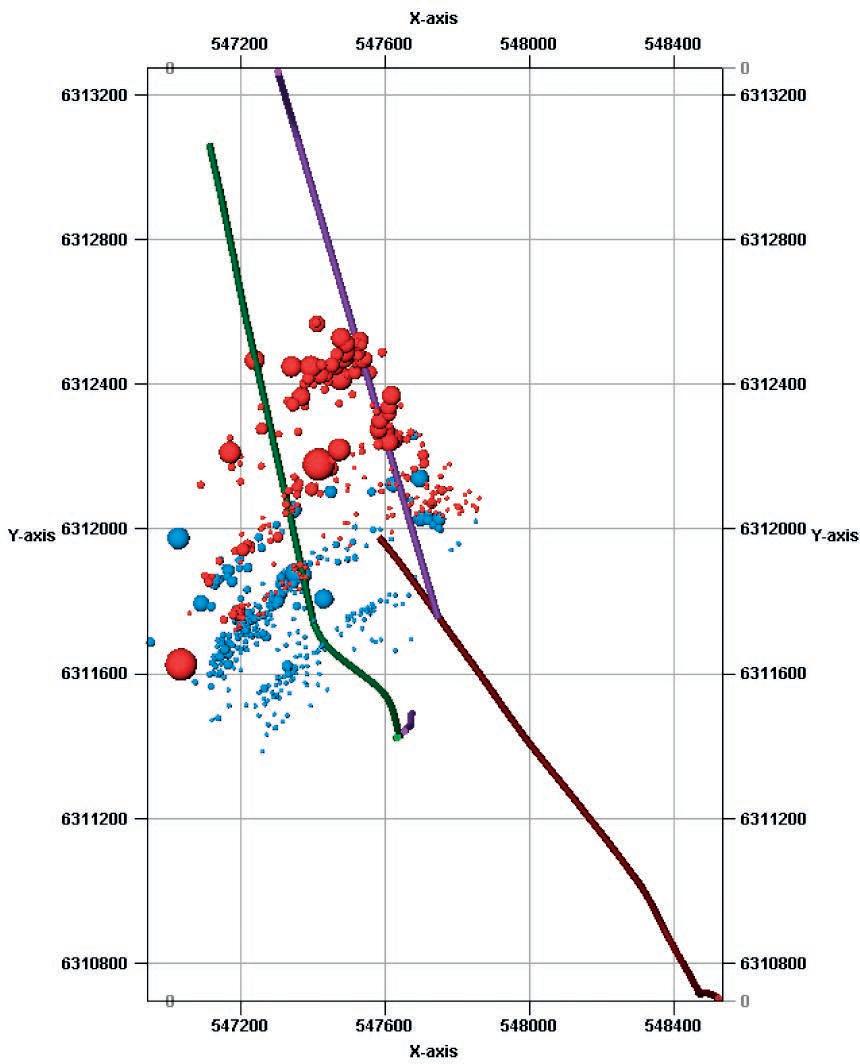
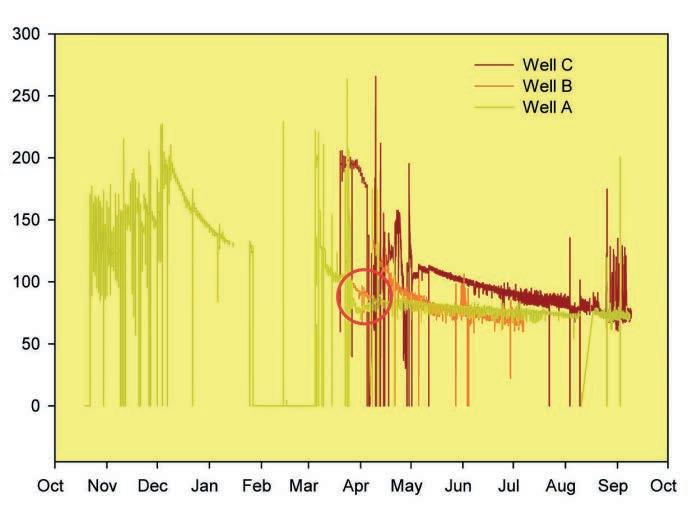
rates for each well.
of the minimum principal stress. Figure 4 shows the relative ISIPs for each stage overlain with the Poisson’s ratio. Generally,
low ISIPs are found in the low Poisson’s ratio regions, suggesting that these regions represent regions of lower stress.
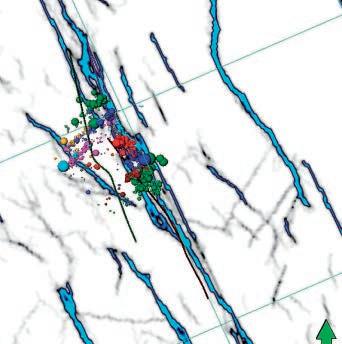
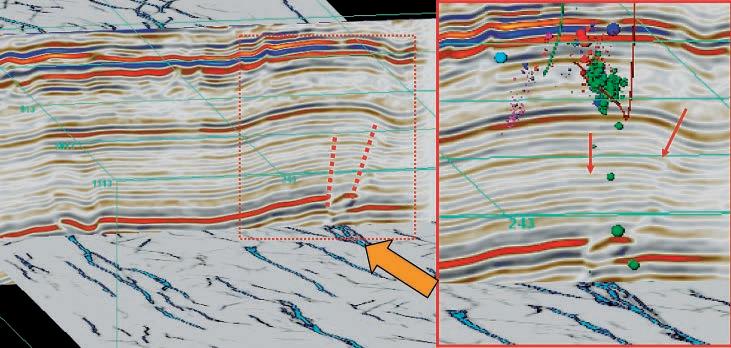
The case study also shows an interesting aspect in terms of well interference. Figure 5 shows the microseismic from the two wells, where the microseismic locations are seen to overlap. The hydraulic fractures in each well stimulated the same fracture network, and resulted in interfering hydraulic fracture networks between the wells. Production data was also examined for the three wells (Figure 6). Production rates from Wells A and C are significantly better than Well B. Also notice that the production on Well A falls as Well B comes online, indicating interference as the two wells attempt to drain the same portion of the reservoir. Understanding the hydraulic fracture networks created in each well, allows better well placement to avoid well interference.
Returning to the questions about the hydraulic fracture geometry, each are discussed in turn.
1. Why are the microseismic events large along Well C?
The seismic deformation, b -values, and focal mechanisms all point to interaction of the hydraulic fractures with a NW-SE striking fault system. While the fault interaction is predominantly associated with fracturing Wells B and C, a small indication is found for the NE extent of the Well A microseismicity. Ant tracking indicates a fault associated with a lateral discontinuity in reflections below the reservoir, directly under the region of largest seismic deformation (Figures 7 and 8). The large number of high-magnitude microseismic events along Well C is attributed to fault activation consistent with the vertical extension of this fault.
2. Why are there no microseismic events towards the NE ?
If microseismicity had occurred further to the NE, it would have been detected by the microseismic array. The interaction between the hydraulic fracture and fault system
appears to act as a barrier to the hydraulic fracture extending further to the NE. As long as the permeable open fault allows fluid penetration within the fault network, it is easy to imagine that it would be unlikely to create a new hydraulic fracture. Well C, however, does have an indication of microseismicity to the SW of the well (occurring later in each stage), which suggests that eventually the hydraulic fracture does start to grow out of the fault network. As described in the next section, the microseismicity then moves in a SW direction similar to the rest of the wells. Therefore, the lack of microseismic events toward the NE is attributed to fracture asymmetry associated with the fault system near Wells B and C.
3. Why do the microseismic events tend to go towards the SW?
The microseismicity from each well grows preferentially in a SW direction, towards the direction of lower Poisson’s ratio. A
(Continued on page 37...)



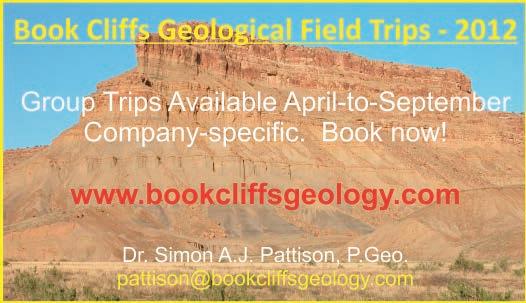
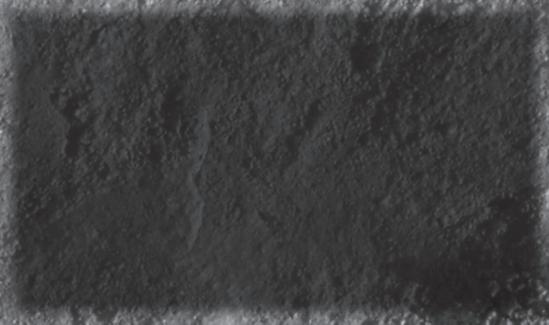
Want to find all the potential in your reservoir quickly?
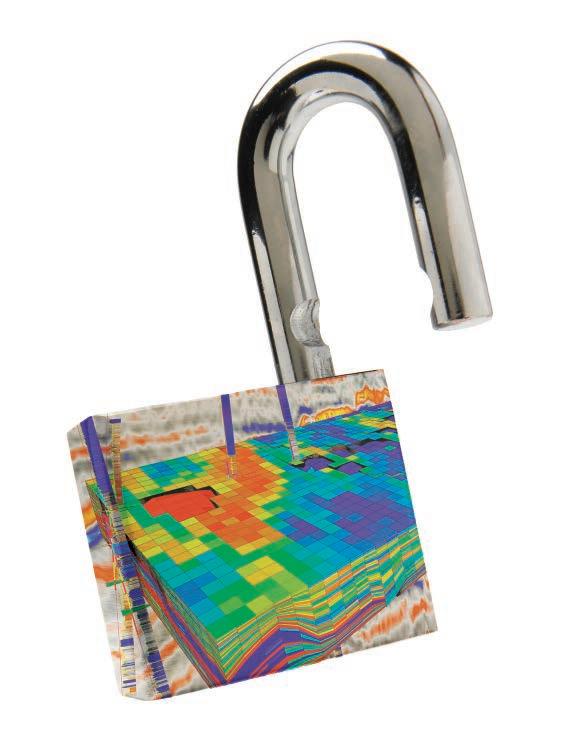
Introducing new DecisionSpace® Earth Modeling software.
Combine proven science with intuitive usability with the Earth Modeling module of the unified DecisionSpace® Desktop software. Collaborate more closely and efficiently by sharing a common subsurface framework. Improve understanding of reservoir potential and uncertainty with 3D reservoir characterization. Discover more of your reservoir’s potential with user-created workflows, industry-leading algorithms and intelligent defaults.To get better answers faster, visit halliburton.com/decisionspacedesktop

constrained, horizontal stress effect is associated with transverse strain resulting from the vertical lithostatic load, which is given by:
H = h = ( /(1 - )) * zz + tectonic
This would result in lower stresses in lower Poisson’s ratio ( ) material and would, in turn, result in more hydraulic fracture growth in that direction. The observed ISIP gradients (Figure 5, page 34) are also consistent with lower stresses in the lower PR regions.
4. Why is the geometry of the microseismic events different near Well A?
The microseismic events associated with stimulation of Well A are distributed in the maximum stress direction, as expected for a tensile hydraulic fracture. Therefore, Well A appears to be anomalous simply due to the lack of fault activation seen around Wells B and C.
The distribution of the microseismicity recorded during the hydraulic fracturing of these wells appears to be controlled by both the reservoir heterogeneity of the reservoir and pre-existing faults/ fracture networks. During the frac of the first well A, the microseismicity shows a conventional hydraulic fracture, trending in the expected NE-SW direction: orthogonal to the minimum stress direction. This well is in the center of the low Poisson-ratio region and does not interact with preexisting faults, ultimately resulting in the best production out of the three wells. While the distribution is approximately symmetric, there are a larger number of events and more deformation to the SW in the direction of the lower Poisson’s ratio (Figure 2, page 33). The second well B, is drilled along the inferred NW-SE fault system and results in significantly more deformation concentrated near the well. Microseismicity associated with well B also grows asymmetrically towards the SW overlapping with the well A microseismicity, indicating interaction between the hydraulic fracture networks. Production data from these wells confirms well interference between them. The third well C, also is drilled along the NW-SE fault system and the hydraulic fracture again results in significant seismic deformation along the well. Less seismic deformation occurs as the microseismicity moves SW towards the low-Poisson’s ratio region. The NW-SE-trending fault structure appears to act as a barrier to the fractures growing further to the NE. The pre-existing fault structures have the strongest control on
the hydraulic fracture and microseismic distributions, although the fractures do seem to preferentially grow towards the lower stress areas with low Poisson’s ratio. Clearly understanding these controls is critical to enable a properly designed and executed well stimulation design as well as subsequent well placements.
Maxwell, S.C., Jones, M., Parker, R., Leaney, S., Mack, M., Dorval, D., D’Amico, D., Logel, J., Anderson, E., and Hammermaster, K. 2010. Fault Activation During Hydraulic Fracturing. CSEG abstracts.
Maxwell, S.C., Cho, D., Pope, T., Jones, M., Cipolla, C., Mack, M., Henery, F., Norton, M., and Leonard, J. 2011. Enhanced Reservoir Characterization Using Hydraulic Fracture Microseismicity. Paper SPE140449.
Norton, M., Hovdebo, W., Cho, D., Maxwell, S., and Jones, M. 2010. Integration of Surface Seismic and Microseismic for the Characterization of a Shale Gas Reservoir. CSEG Expanded Abstracts.
Rich, J.P. and Ammerman, M. 2010. Unconventional Geophysics for Unconventional Plays. Paper SPE 131779.




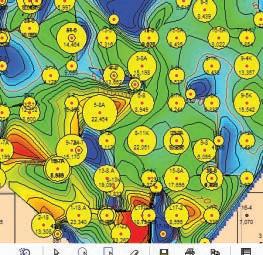

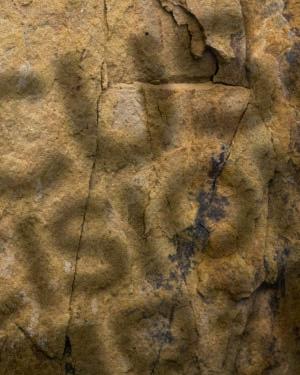
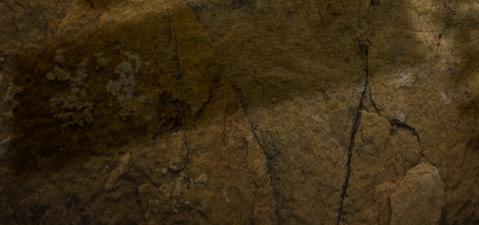


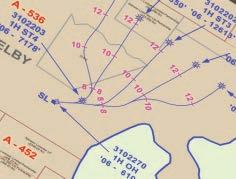

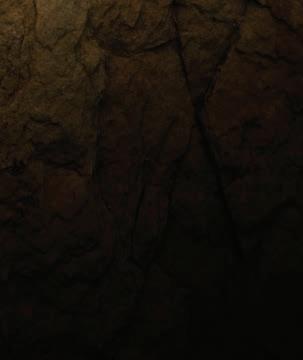


CORPORATE MEMBERS
ALLEN GEOPHYSICAL CONSULTING LTD.
APACHE C ANADA LTD
APEGA
BAKER ATLAS
BDO C ANADA LLP
BLACK SWAN ENERGY
BLUEBACK RESERVOIR
C ANADIAN NATURAL RESOURCES LTD
C ASEY & A SSOCIATES
CENOVUS
CSEG FOUNDATION
CONOCOPHILLIPS C ANADA LIMITED
DEVON C ANADA CORPORATION
ENCANA
E NERPLUS CORPORATION
E XXON MOBIL UPSTREAM RESEARCH COMPANY
GEOLOGIC SYSTEMS LTD
GEOSTRATA RESOURCES INC.
GEOVARIANCES
HALLIBURTON
H UNT OIL COMPANY OF C ANADA
HUS KY ENERGY INC.
IHS
IMPERIAL OIL RESOURCES
JEWELSUITE
LITTLE ROCK DOCUMENT SYSTEMS
LORING TARCORE LABS
MJ SYSTEMS
MURPHY OIL COMPANY
NEXEN INC
PARADIGM
PENN WEST PETROLEUM LTD
PETROCRAFT PRODUCTS LTD
PLUSPETROL S.A.
ROKE TECHNOLOGIES
ROX AR
RPS E NERGY C ANADA LTD
SCHLUMBERGER
S HELL C ANADA LIMITED
SIGMA E XPLORATIONS INC.
S PROULE A SSOCIATES LIMITED
STATOIL
S UNCOR E NERGY INC
TALISMAN ENERGY INC
TOTAL E&P CANADA LTD.
TOURMALINE OIL CORP.
UNITED OIL AND GAS CONSULTING
WEATHERFORD LABORATORIES
AS OF APRIL 10, 2012
CSPG
• Recognition in the monthly Reservoir and quarterly Bulletin
•
• One associate membership
| By Tannis McCartney and Aaron Grimeau
The CSPG Undergraduate Awards were recently given out to four students from across Canada. These awards, in the amount of $500 each, are made possible with full financial support through the CSPG Educational Trust Fund (ETF). They recognize undergrads who demonstrate an aptitude for, and an interest in, sedimentary and petroleum geology. Awards are allocated to a student from each of three regions in Canada (Atlantic and Québec, Central/ Ontario, Western Canada) with a fourth unrestricted award going to a student from anywhere in Canada. This year there were no applicants from Ontario so that award was re-allocated to another student.
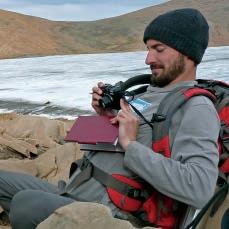
Derrick Midwinter, a 4th-year student at Dalhousie University, fell in love with sedimentary geology working as a field assistant in the Arctic with the Geological Survey of Canada in 2009 and 2010. His undergraduate thesis examined early Triassic strata in the Sverdrup Basin. Derrick is using the Undergraduate Award to attend Vision 2012 and present his undergraduate work there. He would like to take this opportunity to acknowledge Keith Dewing, Thomas Hadlari, Ashton Embry, and Martin Gibling for their support and guidance.
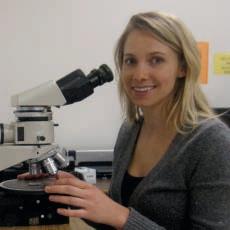
Cynthia Sawatzky, a 4th-year student at Saint Mary’s University, is honoured to have received this award. She developed her passion for geology when she took it as an option in her first year. While her undergrad research and her favourite classes have all been related to sedimentary and petroleum
geology, it was after attending SIFT last year that Cynthia really began considering a career in petroleum geology, a field she describes as essential to the Canadian economy. To Cynthia, winning this award “represents the recognition of my past efforts and a steppingstone toward a future career in petroleum geosciences.”
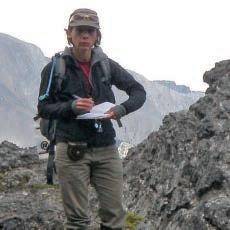
Melanie Klucker‘s love of problem solving and the interdisciplinary nature of geology led her to leave behind a different career and enroll in a B.Sc. in geology at the University of Calgary. Now in her 4th year, Melanie is certain she made the right decision; she not only loves the technical aspects of petroleum geology, but also the need for creativity, collaboration, continuous learning, and initiative. Melanie notes that she is “particularly pleased to be recognized by an organization that promotes education, training, and research amongst professionals within [petroleum geology].”
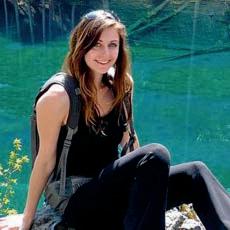
Rochelle Bank is a third-year geology student at Mount Royal University. She is grateful to have the financial support that this award offers. Rochelle became interested in geology as a teen when she had the opportunity to be mentored by a petroleum geologist from Devon Energy. As a university student, she has been able to work as a summer student for three summers. One of the things she has enjoyed immensely is the CSPG student field trips run each summer where she learned skills she has been able to apply in her university courses.

Why did the designation change to P.Geo.?
This change is to enhance public safety and well-being by regulating geoscience activities that fall between geology and geophysics. The move to the P.Geo. designation also signals to the other jurisdictions APEGA’s continued leadership in professional mobility of geoscientists and will align Alberta with other national and international designations in the profession.
Do I have to change my designation to P.Geo.?
No. Existing P.Geol.s and P.Geoph.s will be free to keep their designations.
May I change my designation to P.Geo.?
Yes. You will need to submit a formal change request through the APEGA online process.
May I keep my P.Geol. and/or P.Geoph. designation(s) but use the P.Geo. designation?
Yes

For more information: Tom Sneddon, P.Geol. Geoscience Affairs Manager
P: 403-262-7714 or 1-800-661-7020
E: tsneddon@apega.ca
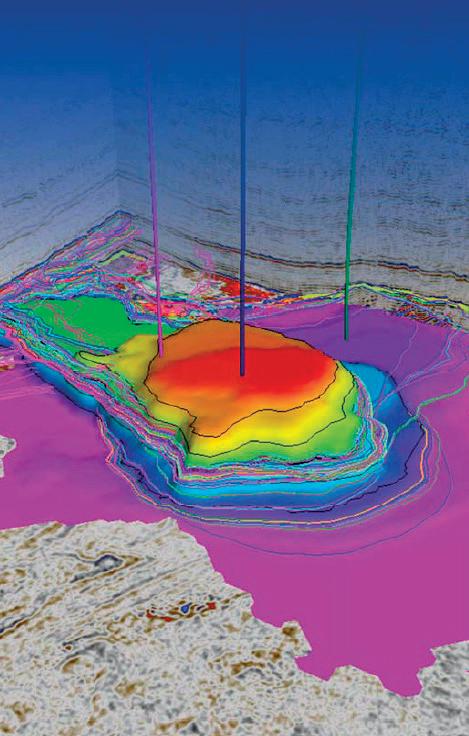
www.blueback-reservoir.com
Take charge of your Petrel* projects and data with Blueback Reservoir`s the Blueback Project Tracker and the Blueback Project Time Machine plug-ins for Petrel.
Blueback Reservoir has developed a portfolio of Data Management Solutions to track and monitor your Petrel projects from all Petrel users and maintain order and structure of your Petrel environment.
Explore the possibilities with the Ocean* development environment.
With Blueback Reservoir’s experience and knowledge many more things are possible.
Learn more?
Contact us at sales@blueback-reservoir.com or visit www.blueback-reservoir.com